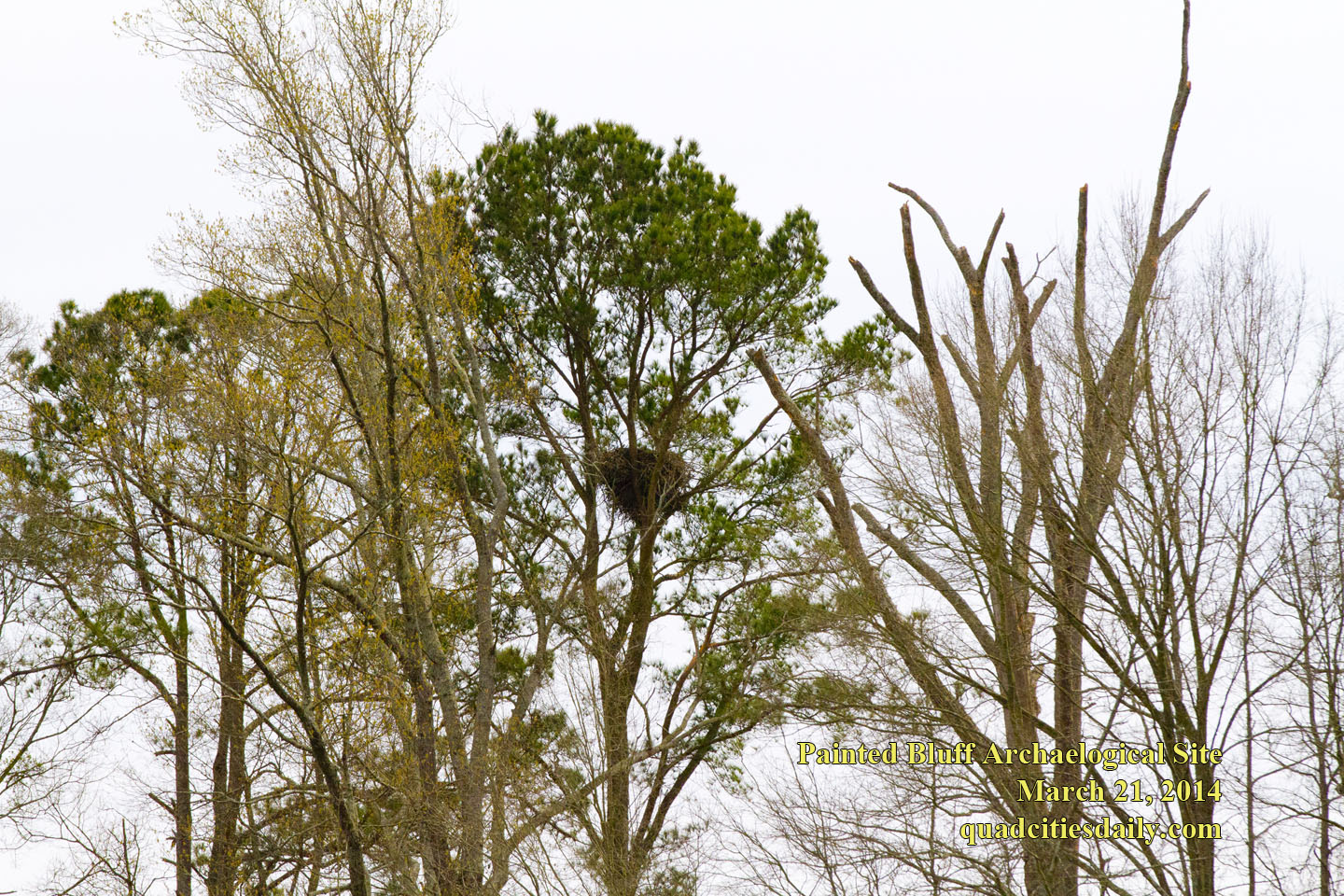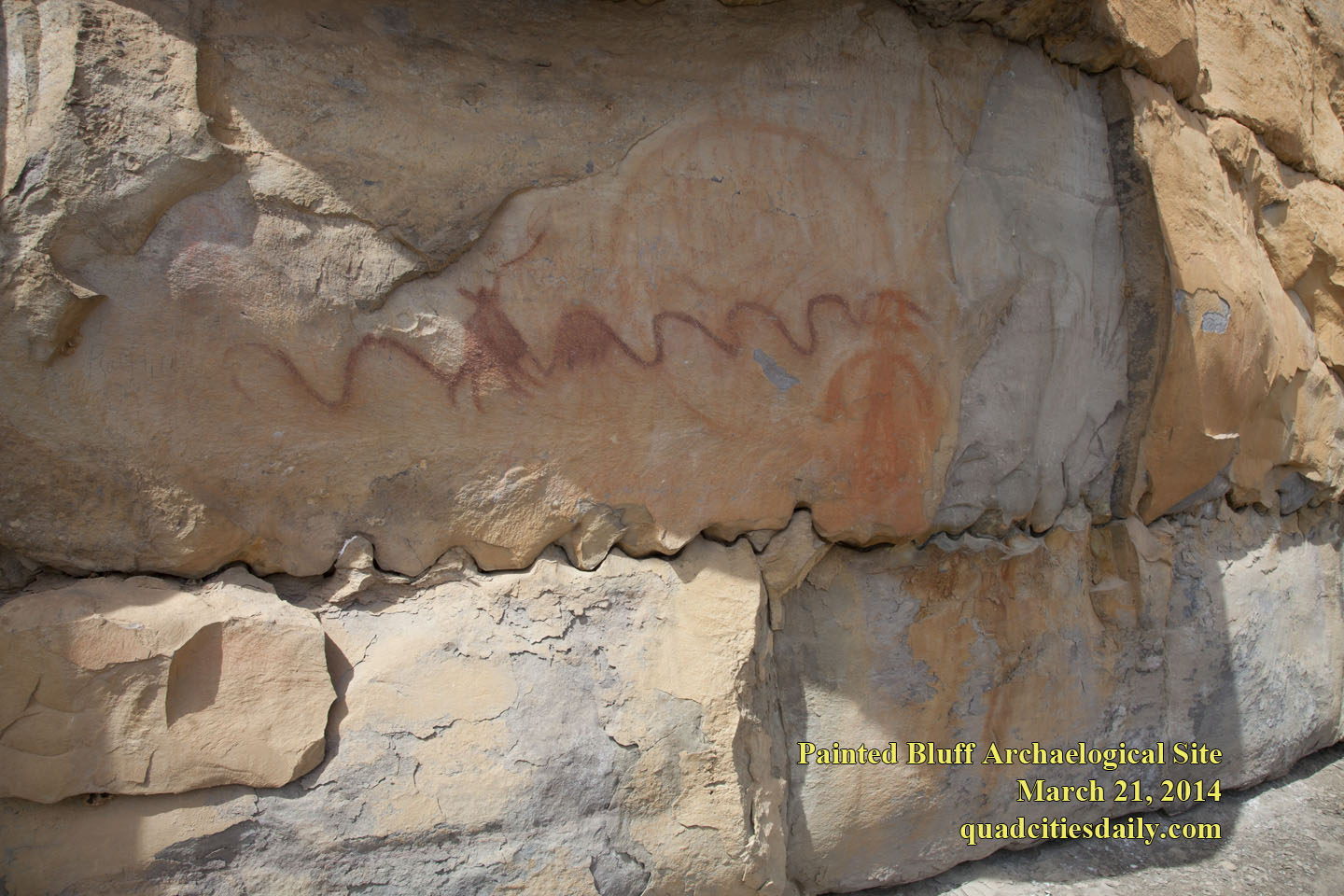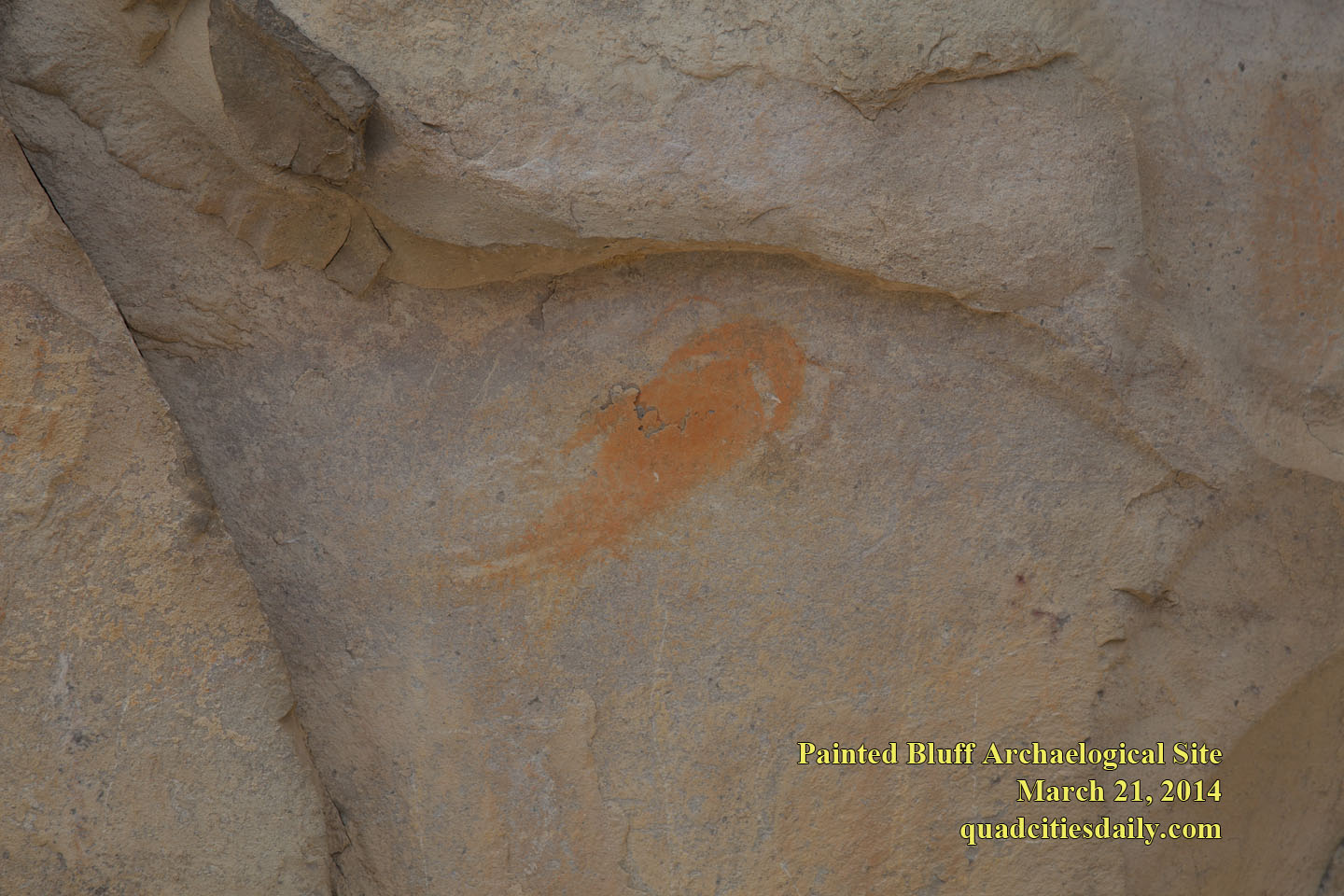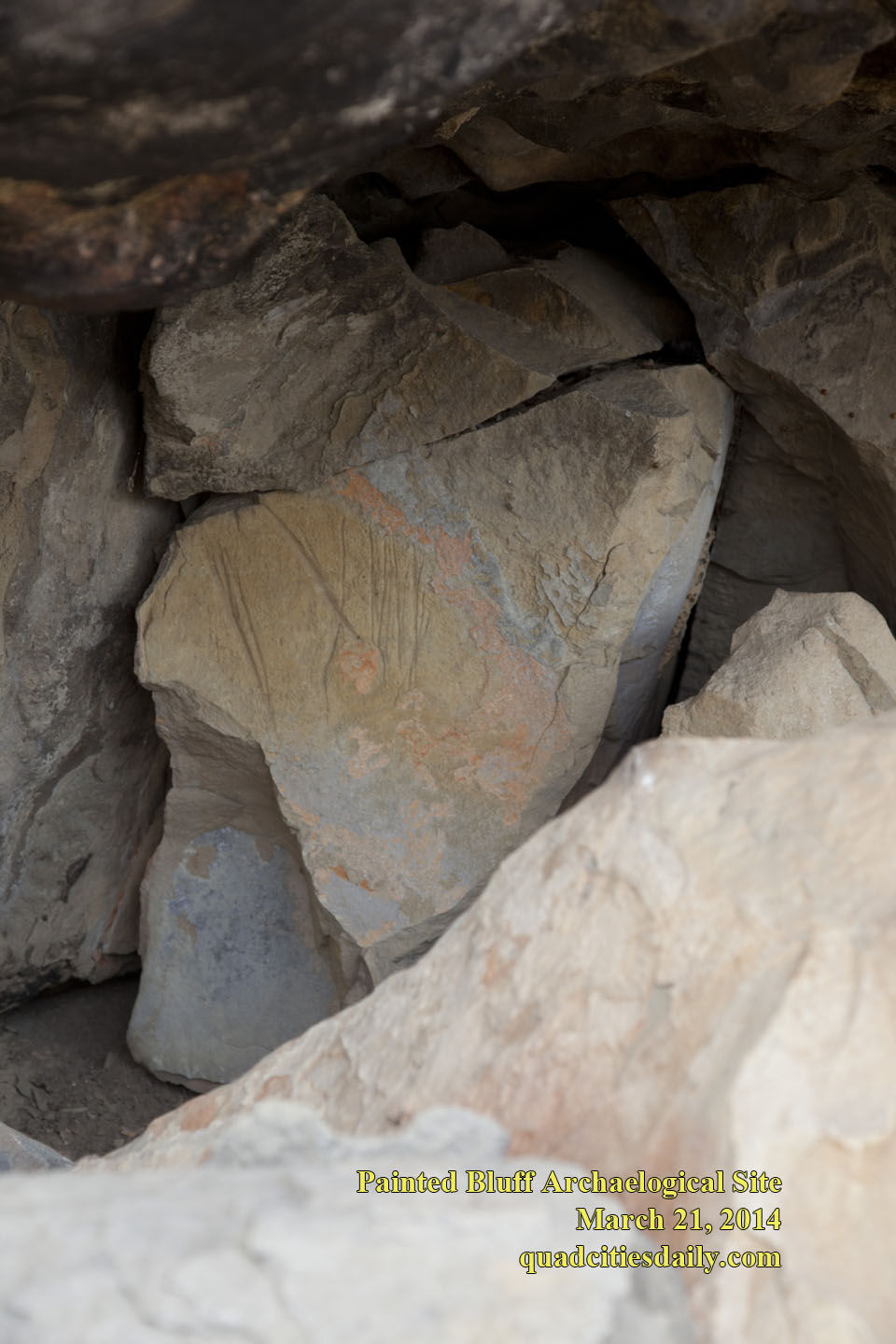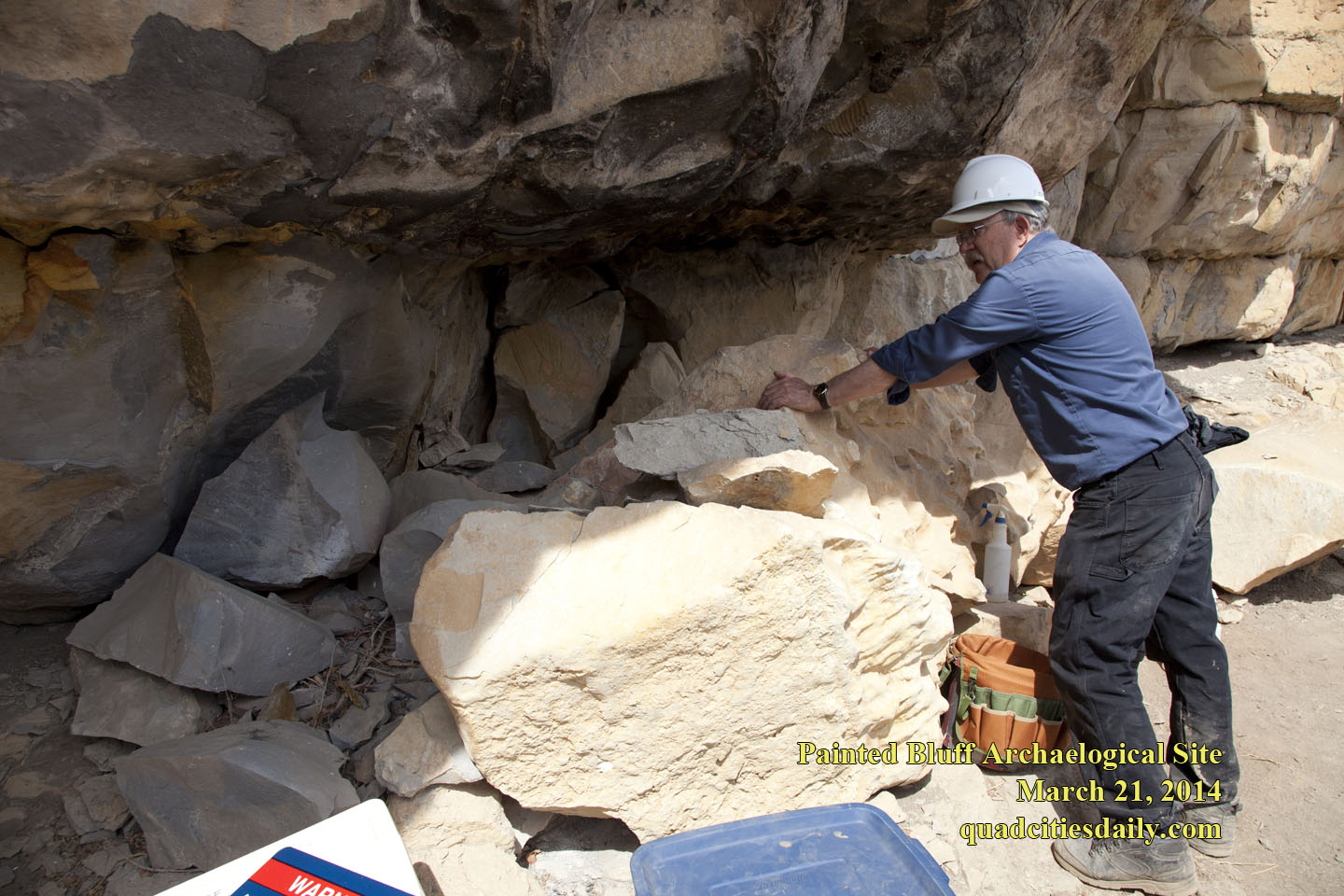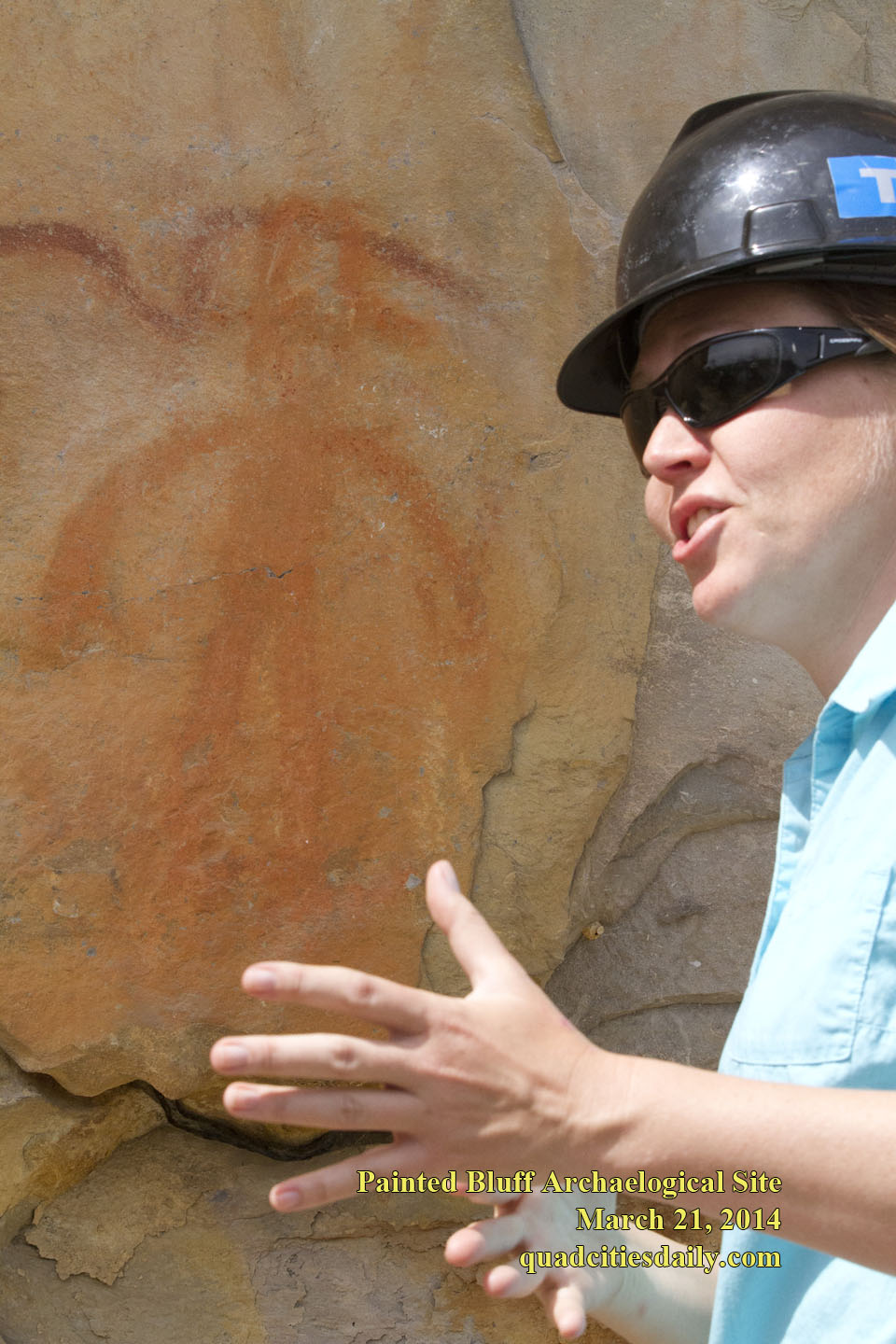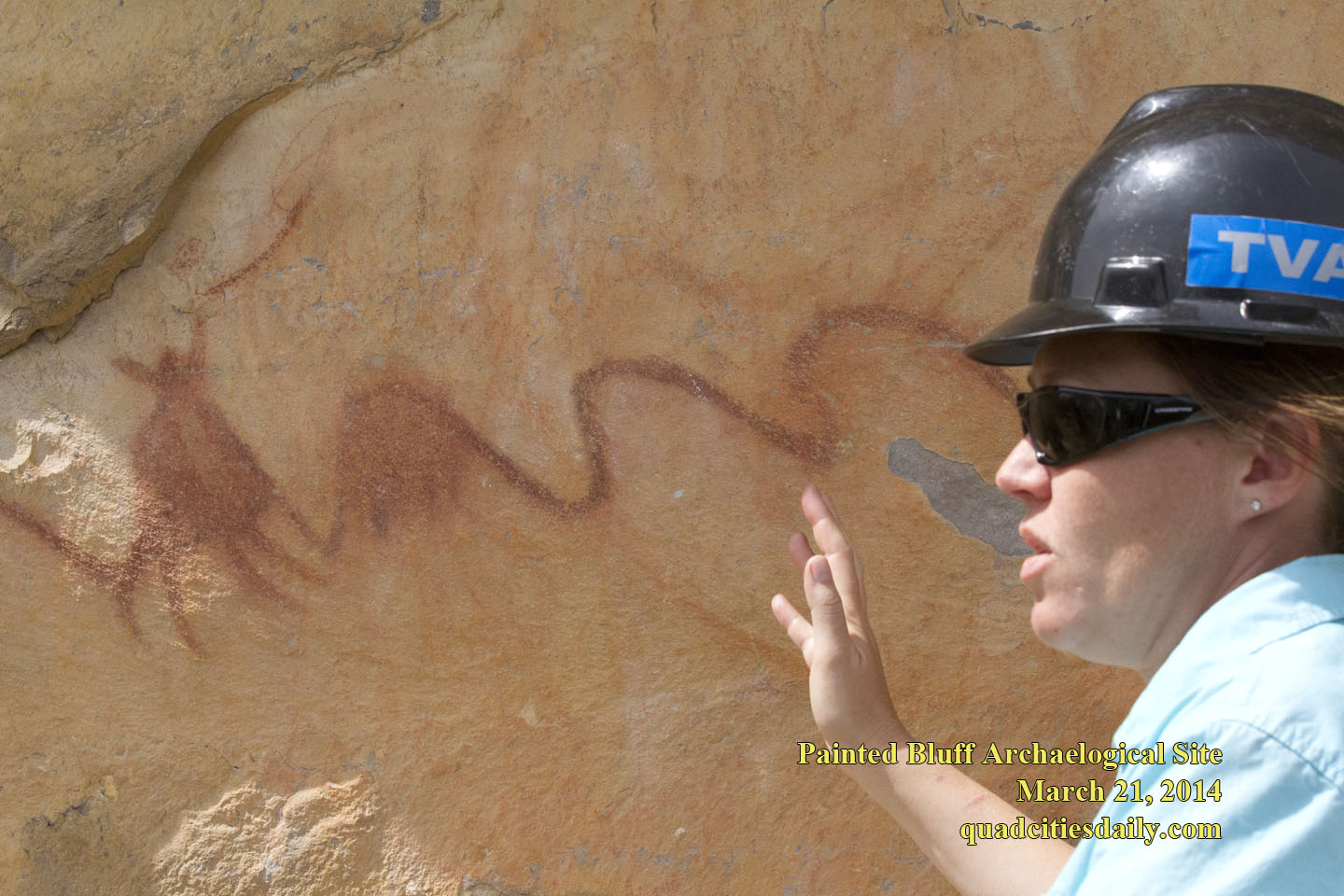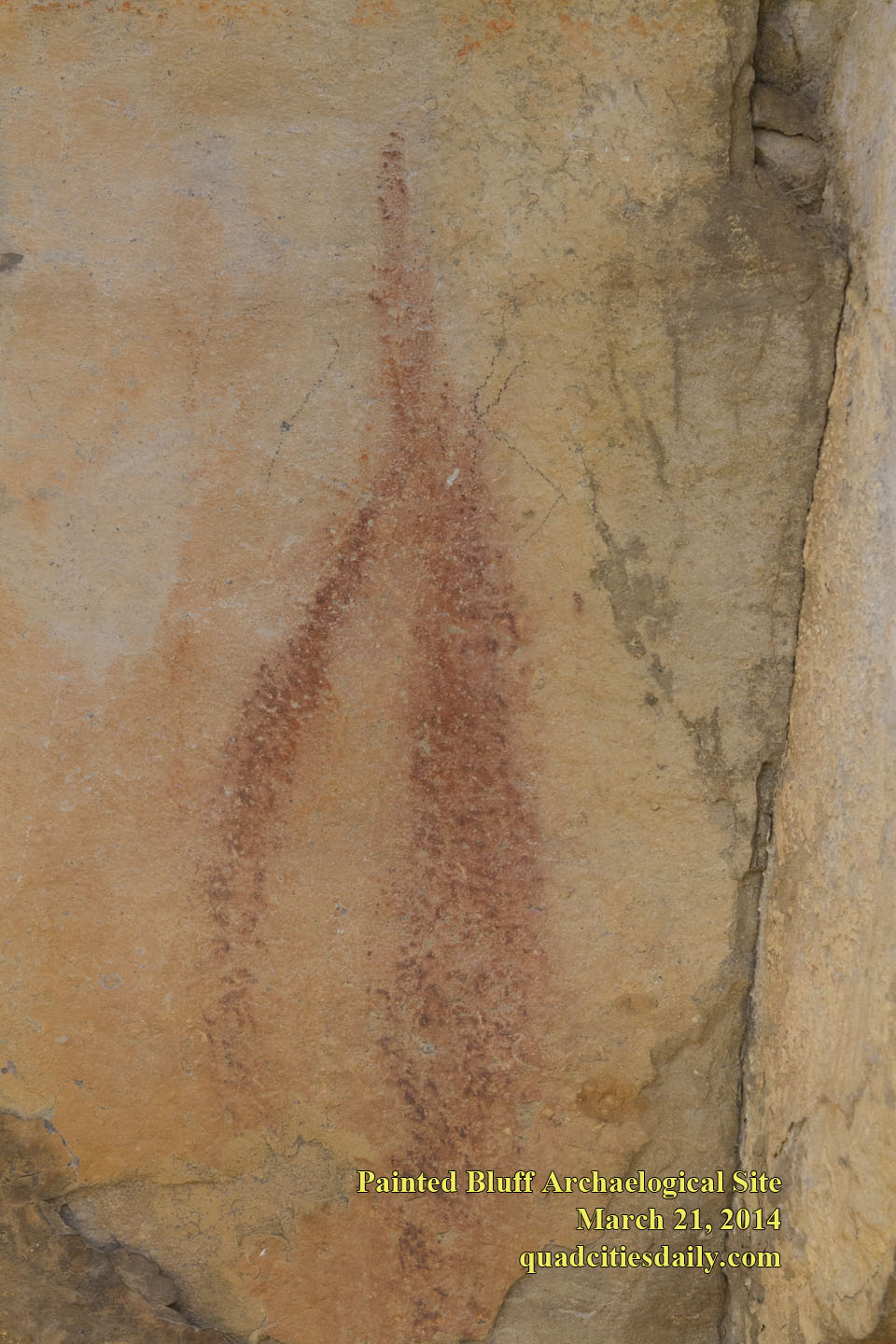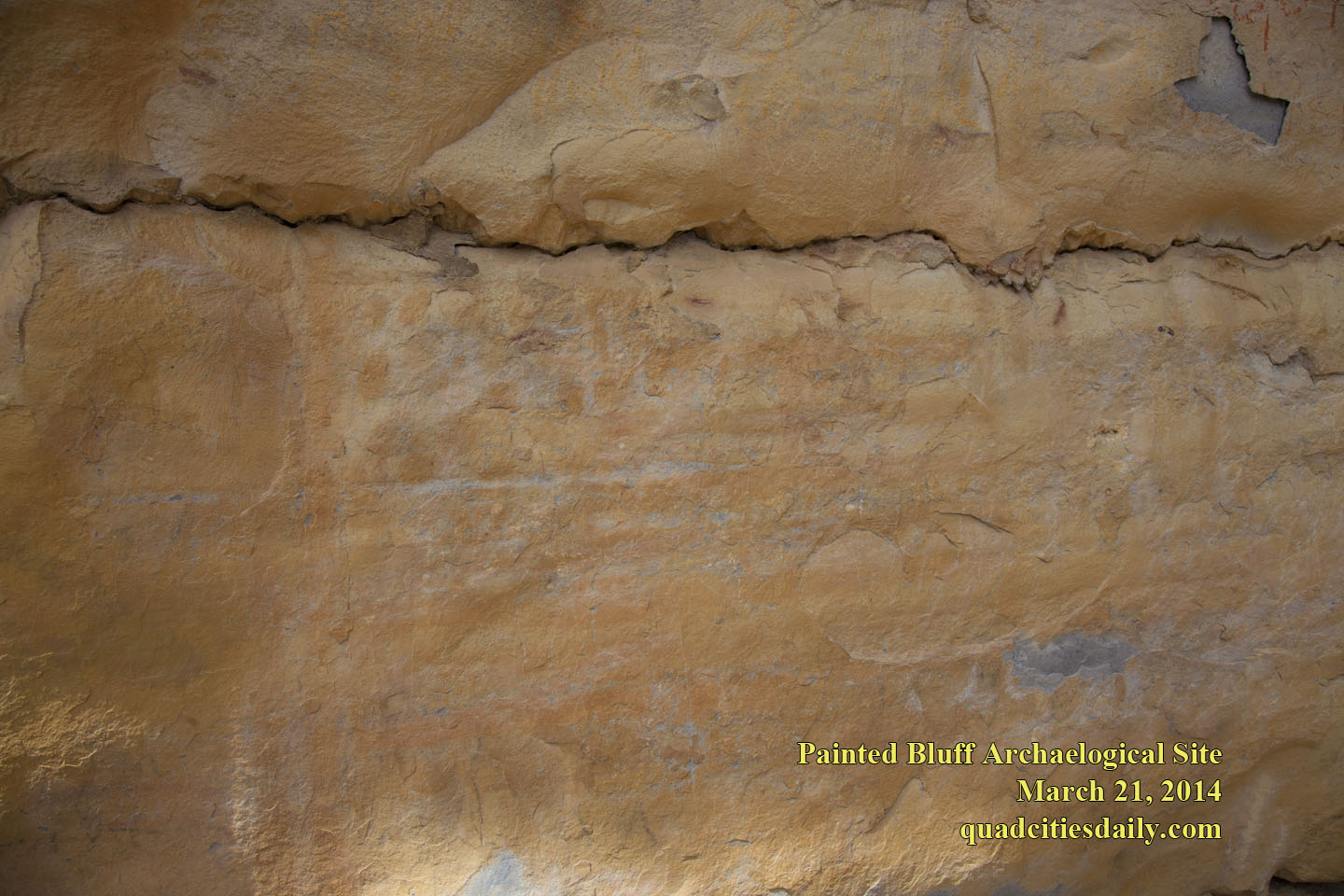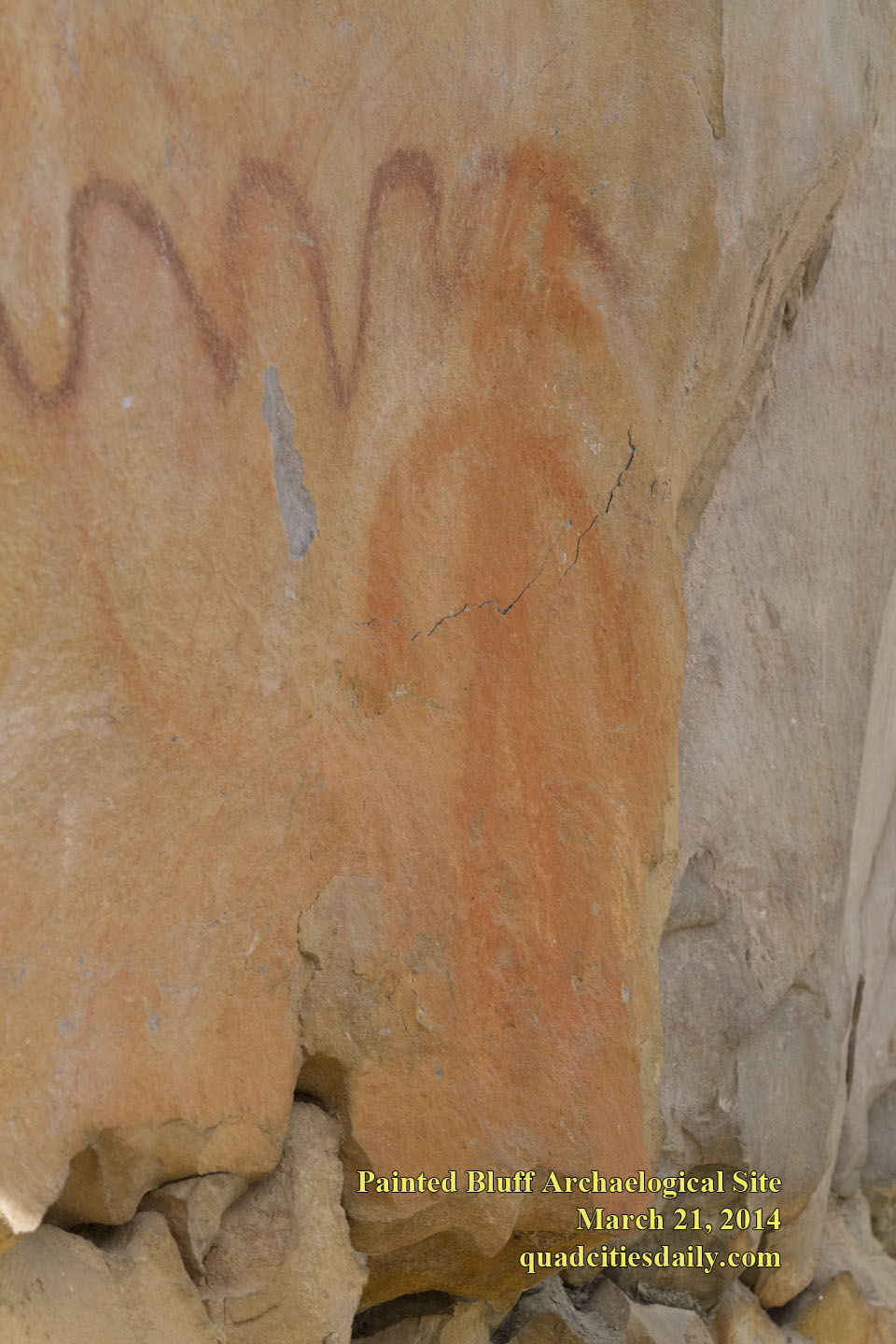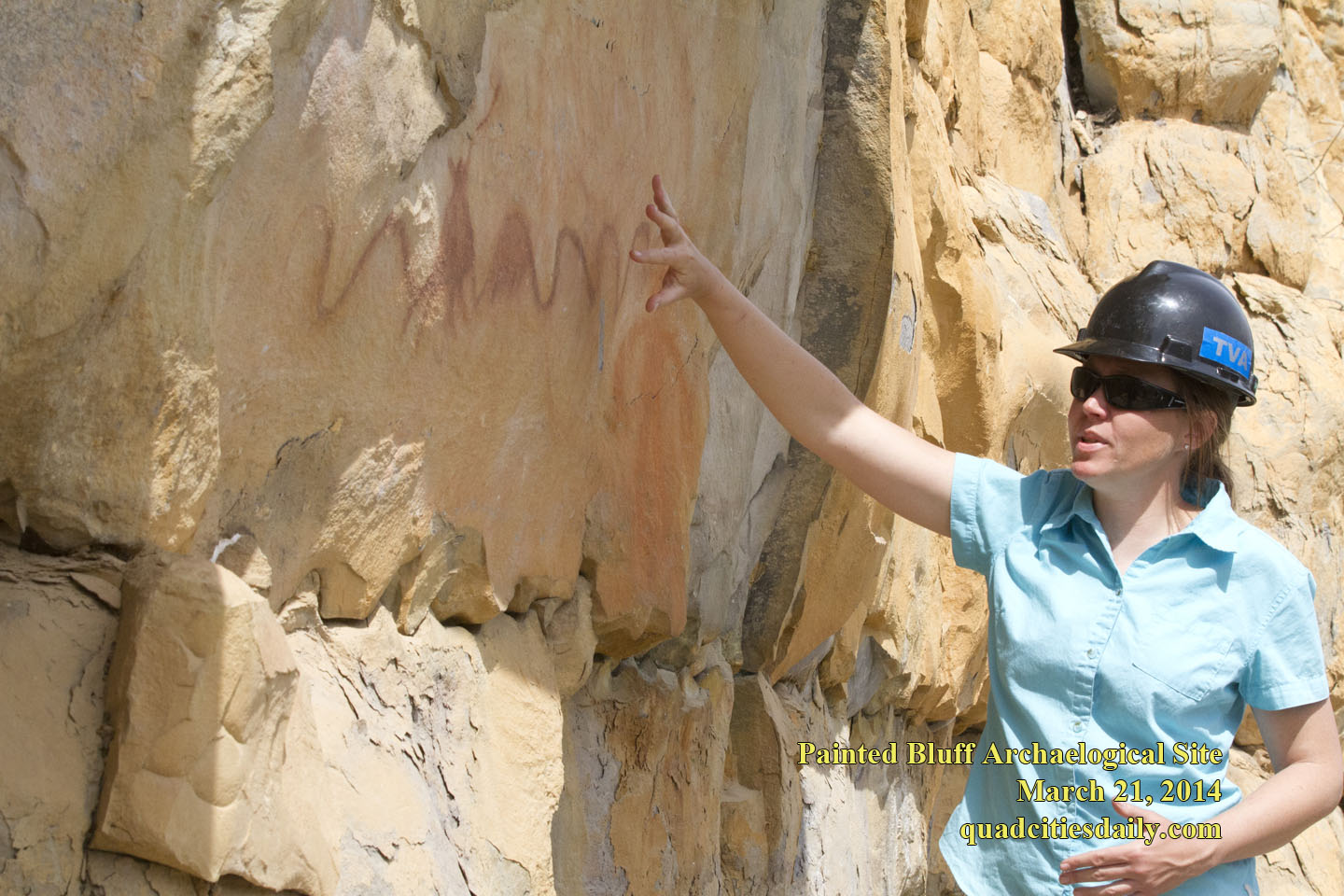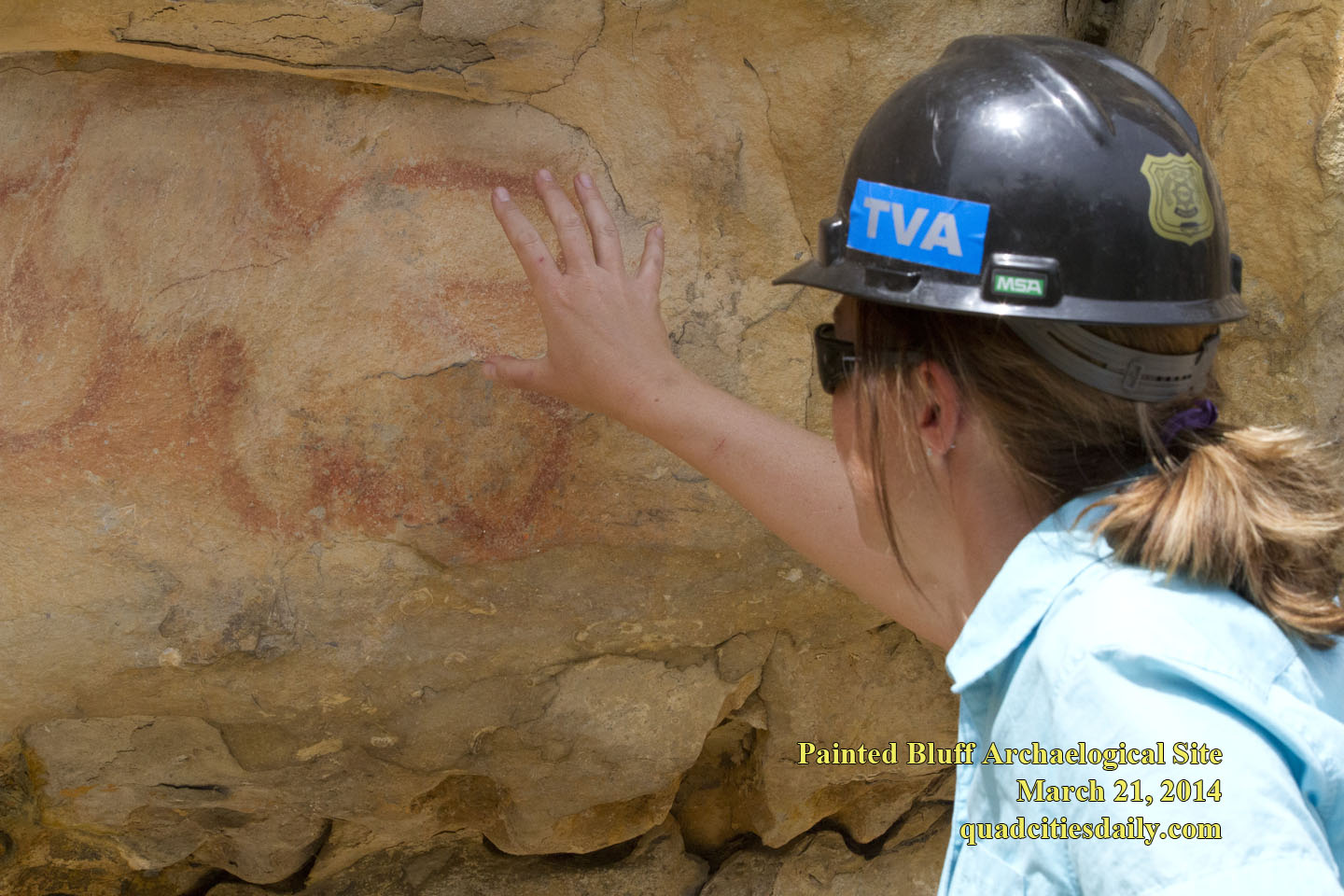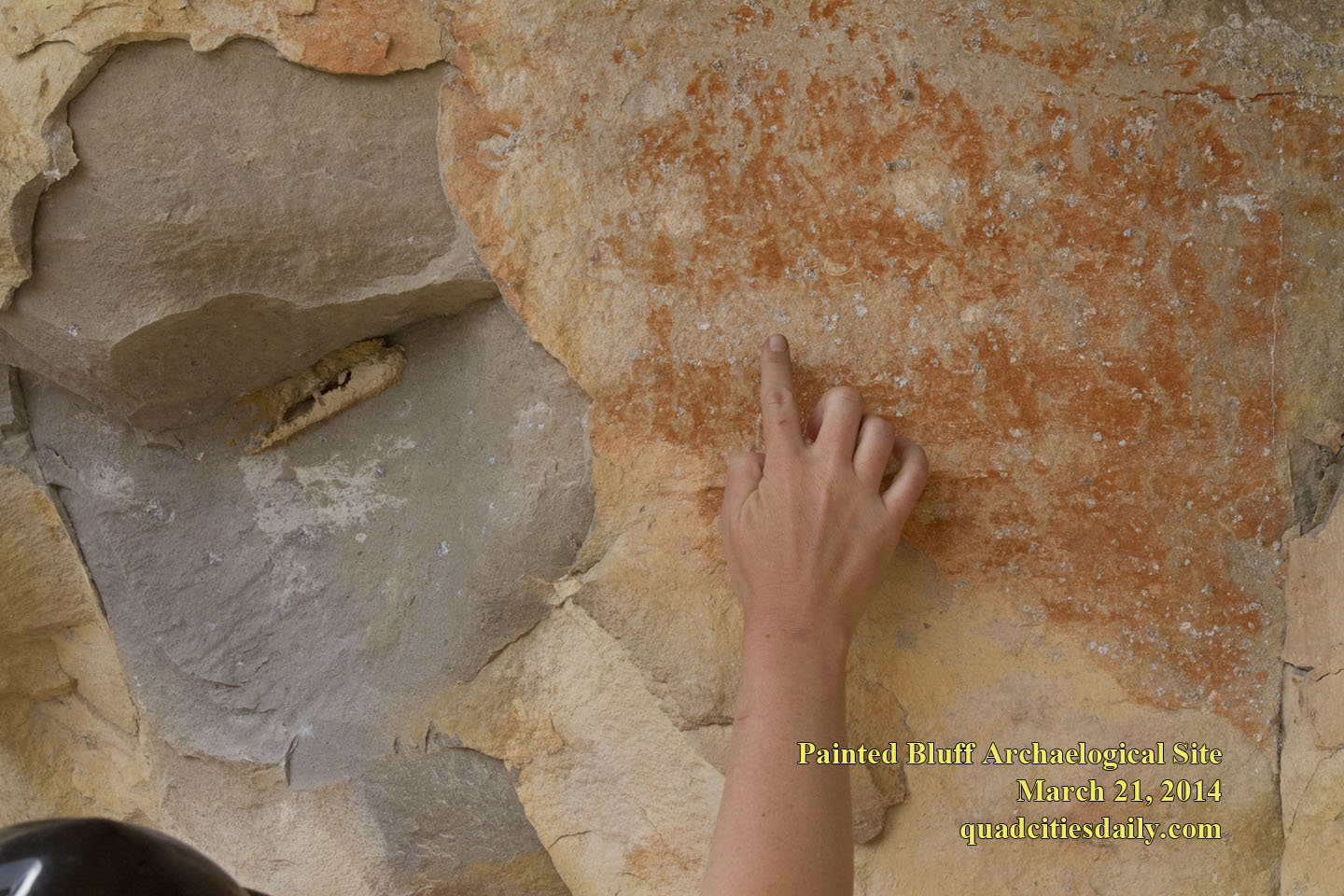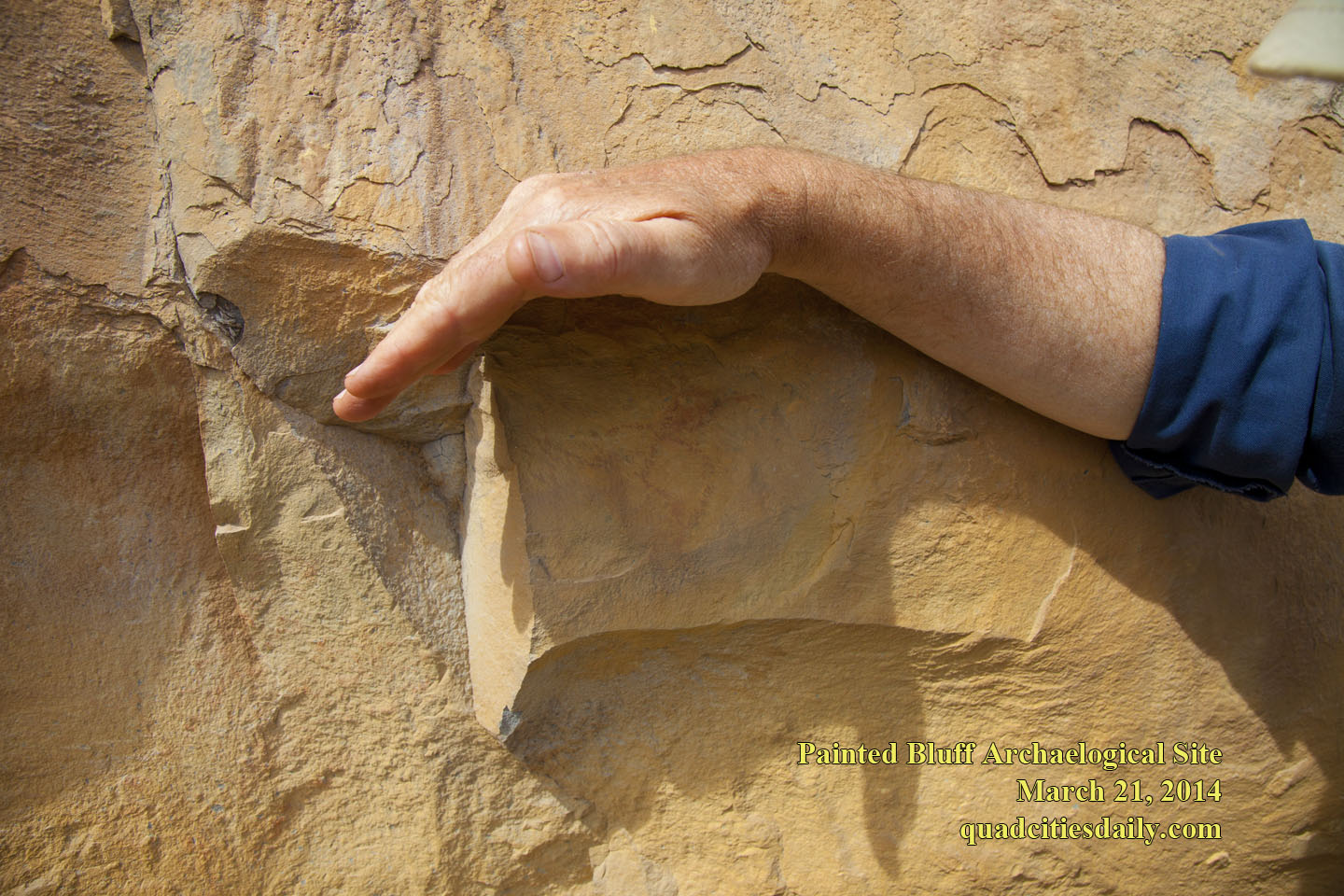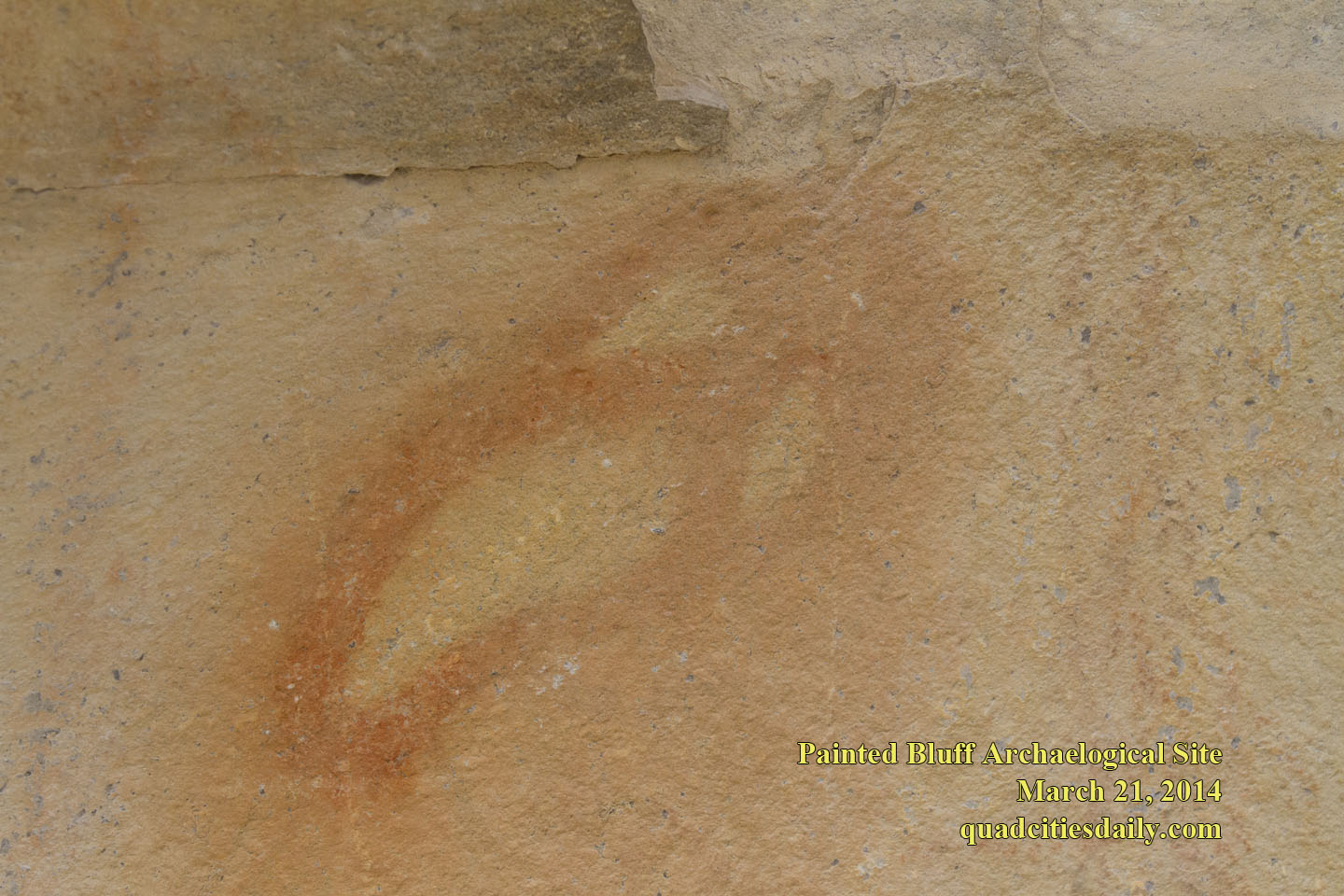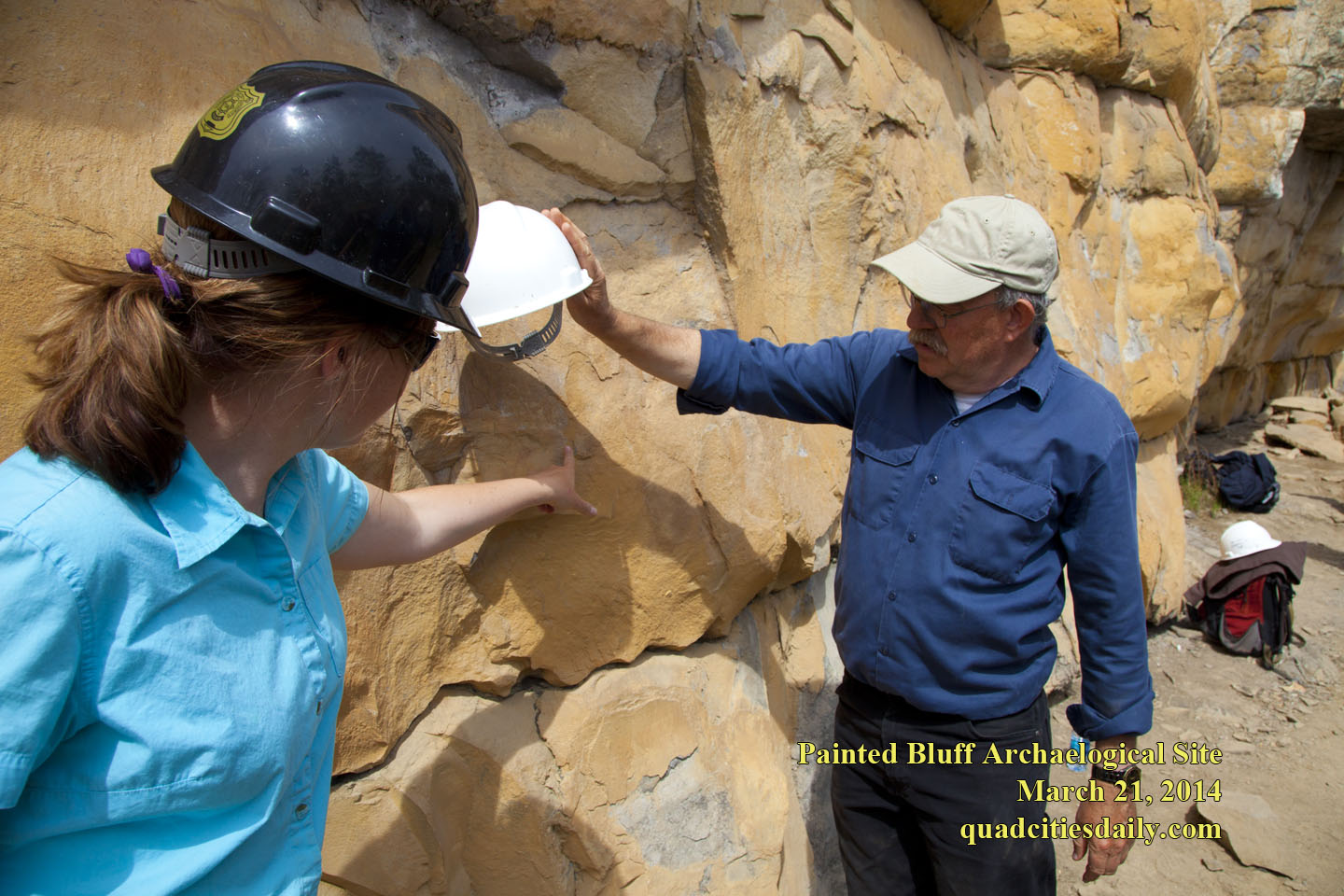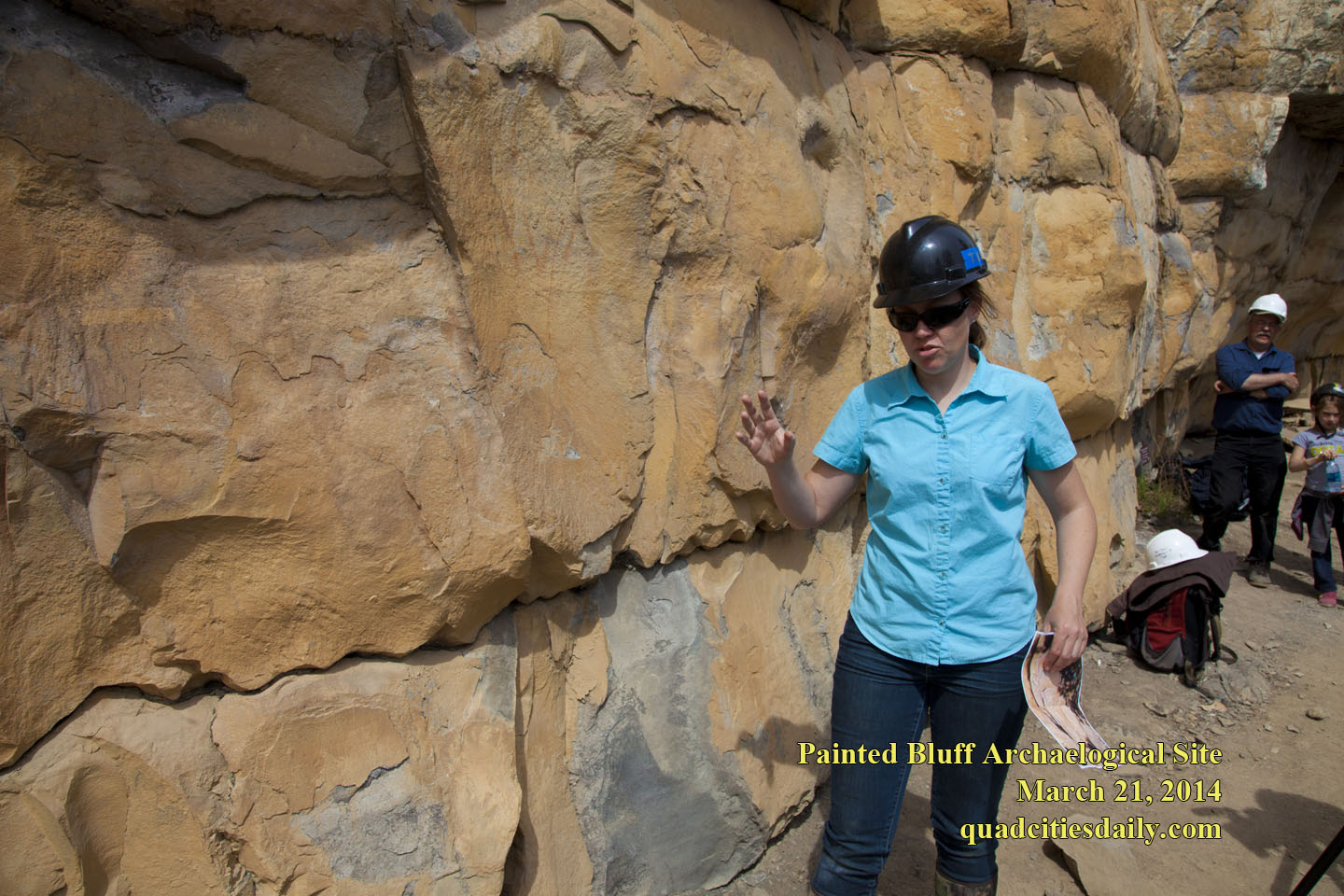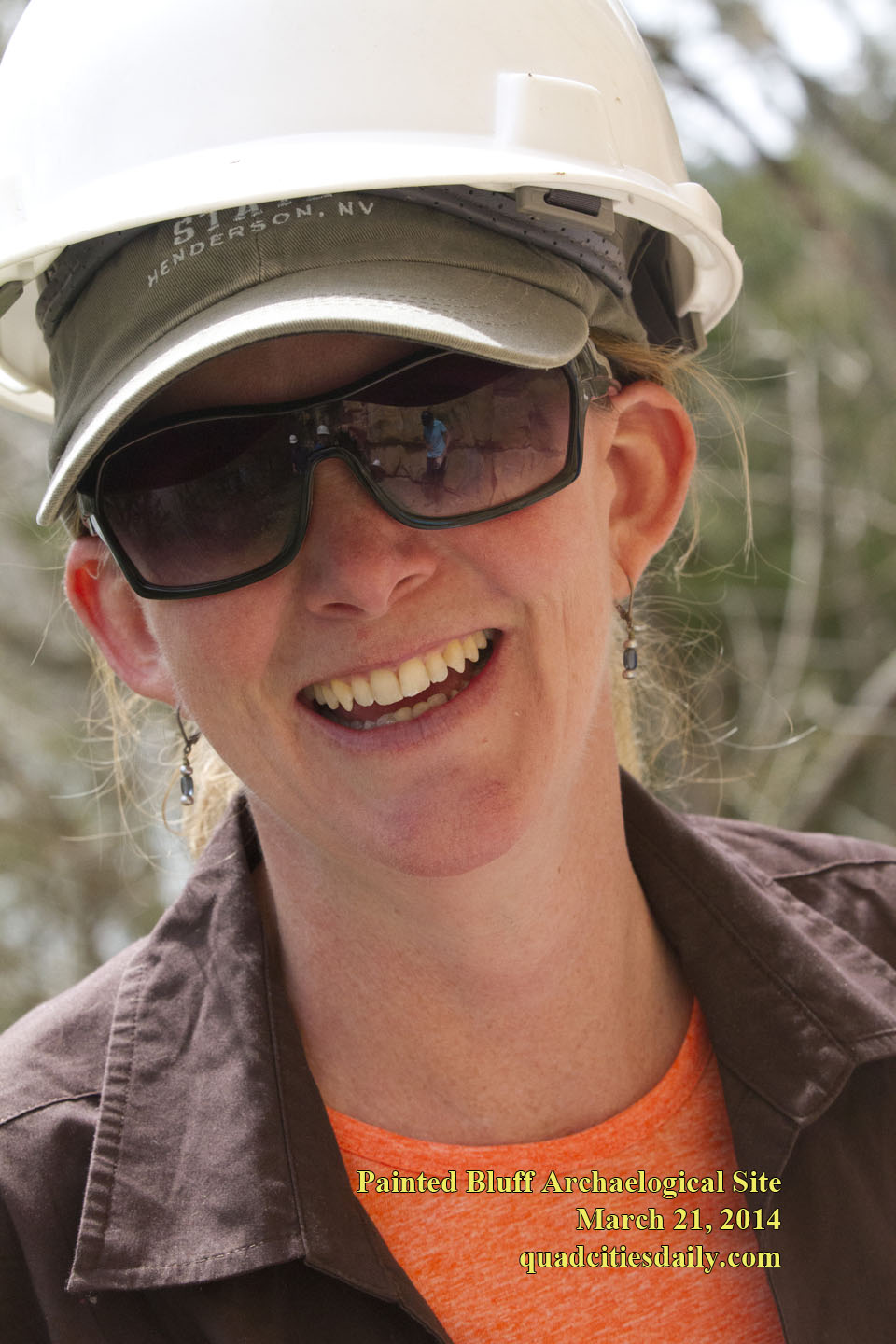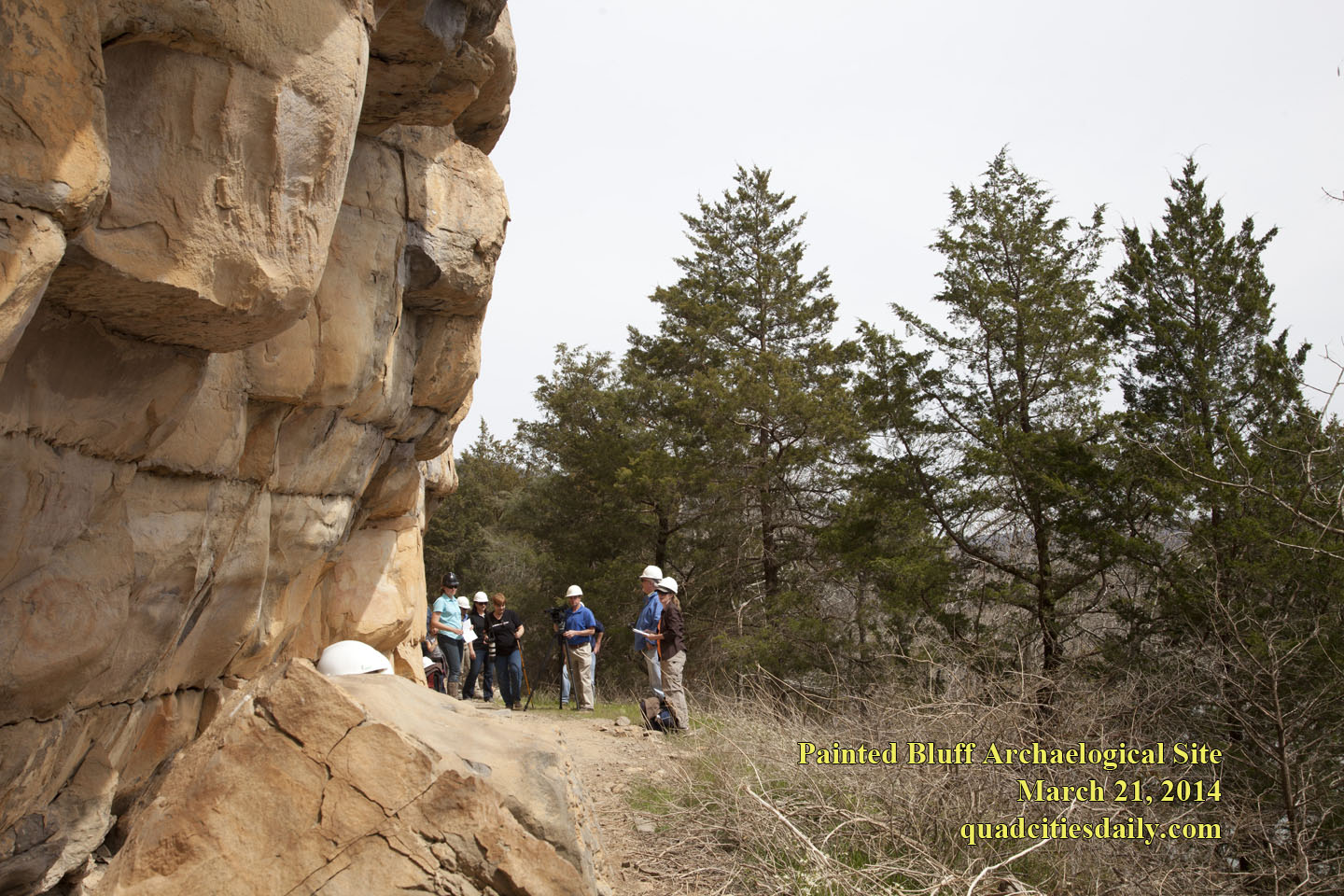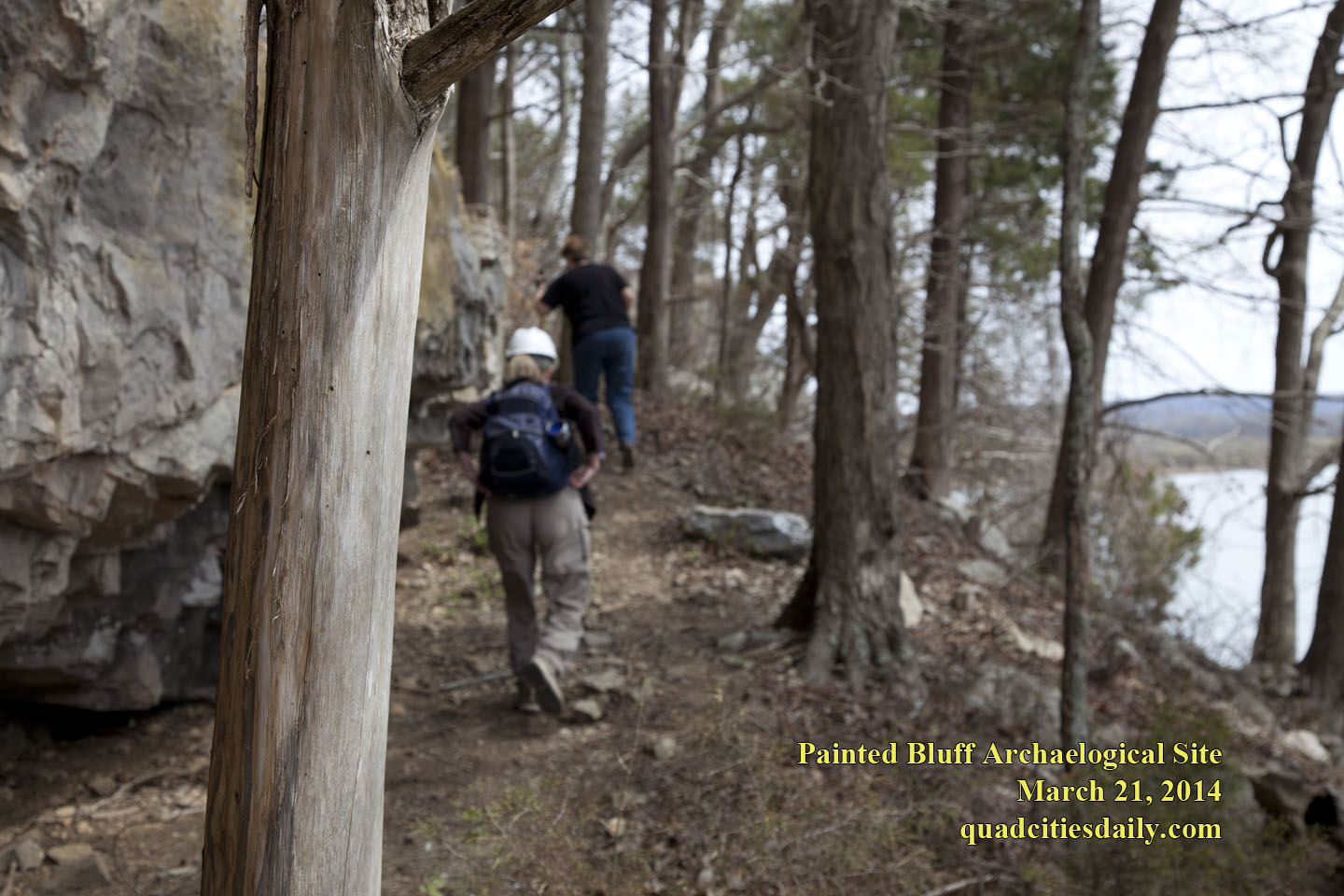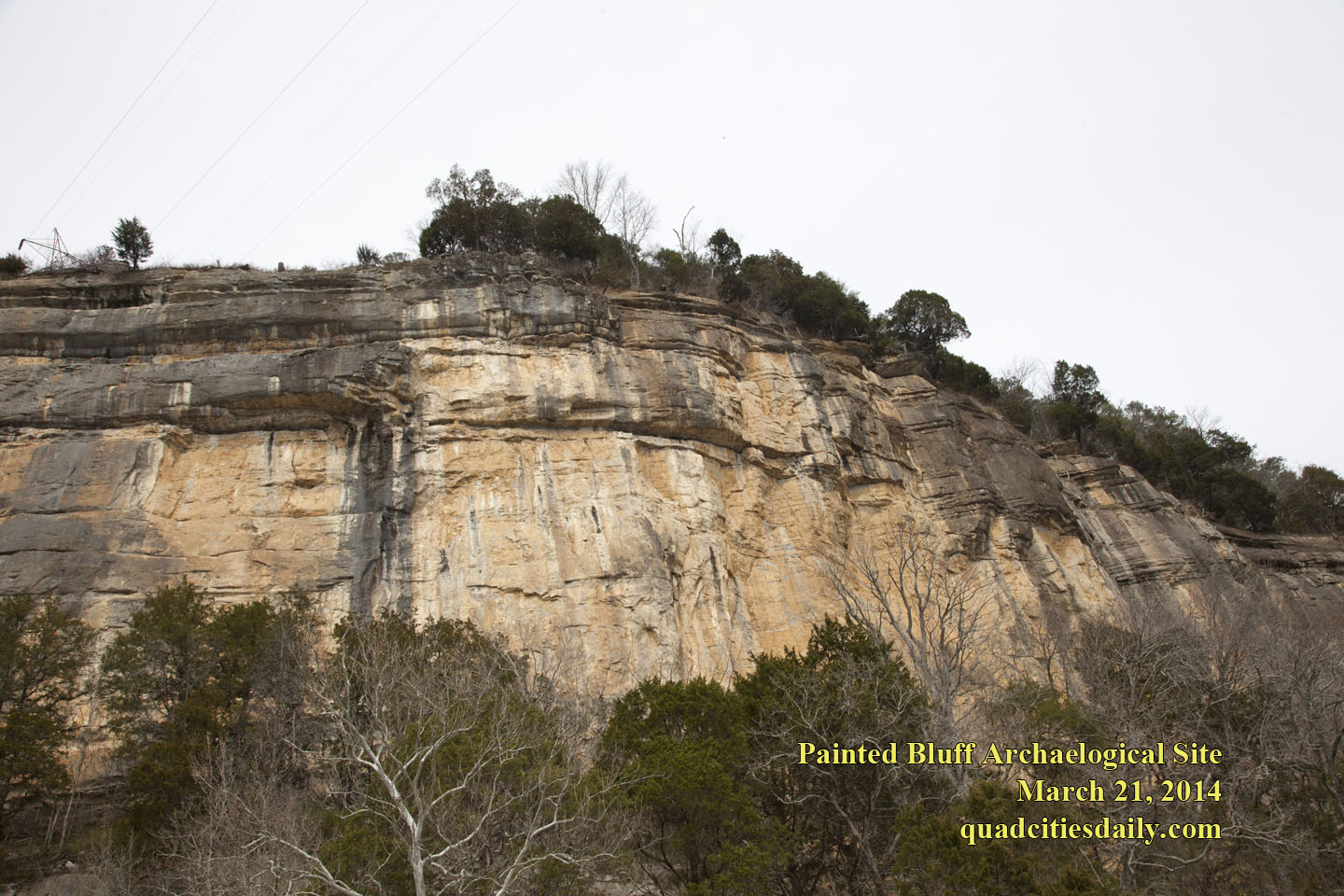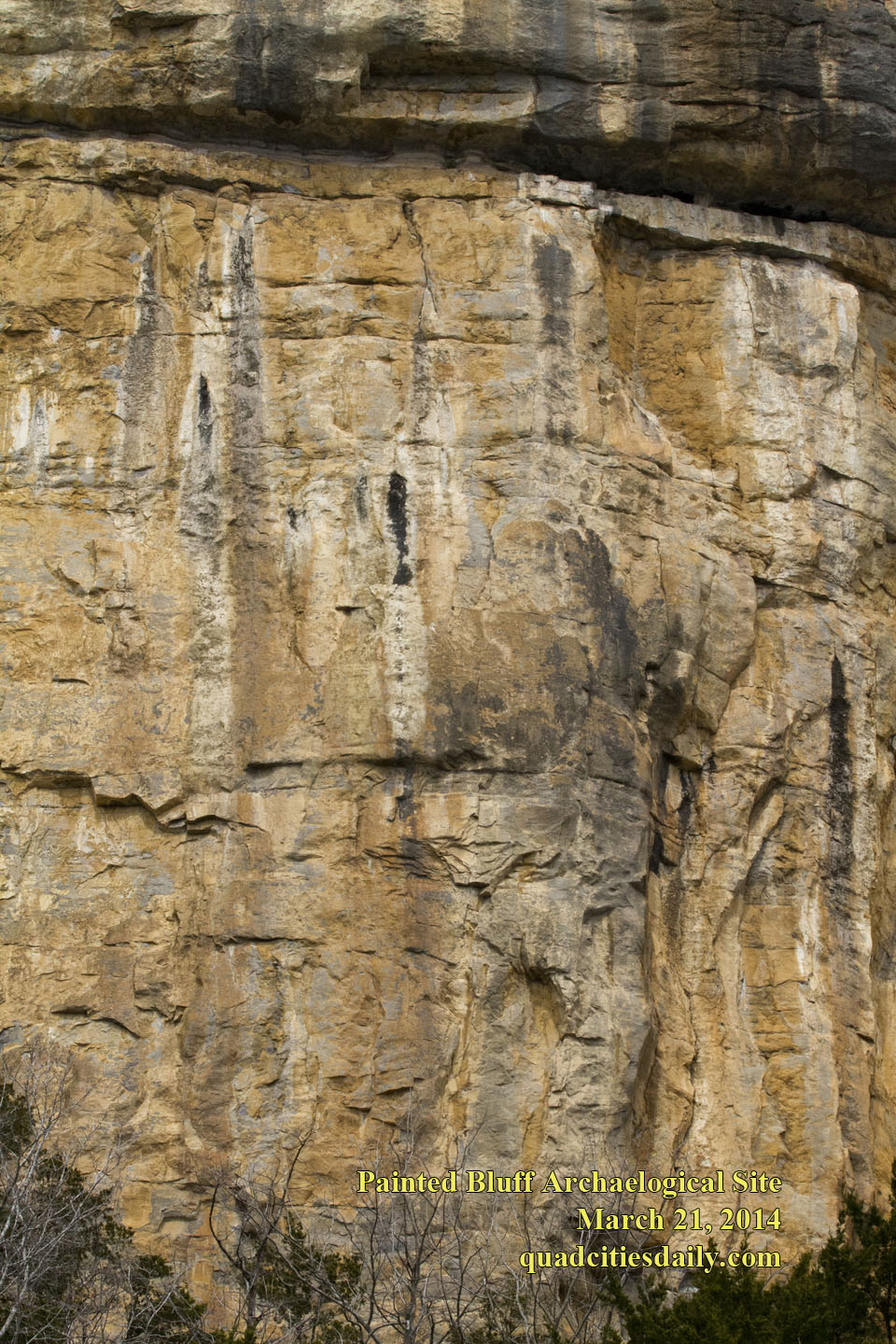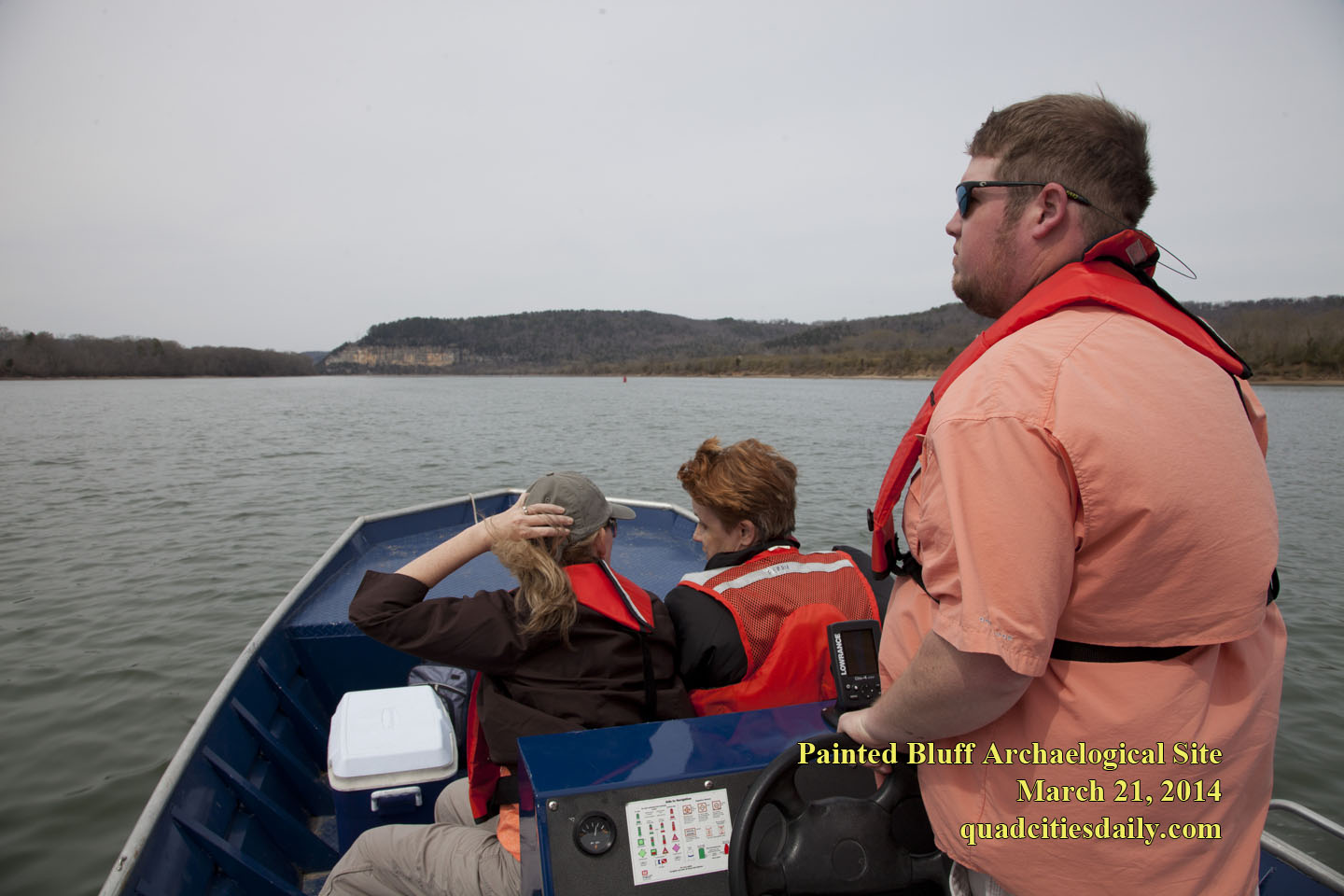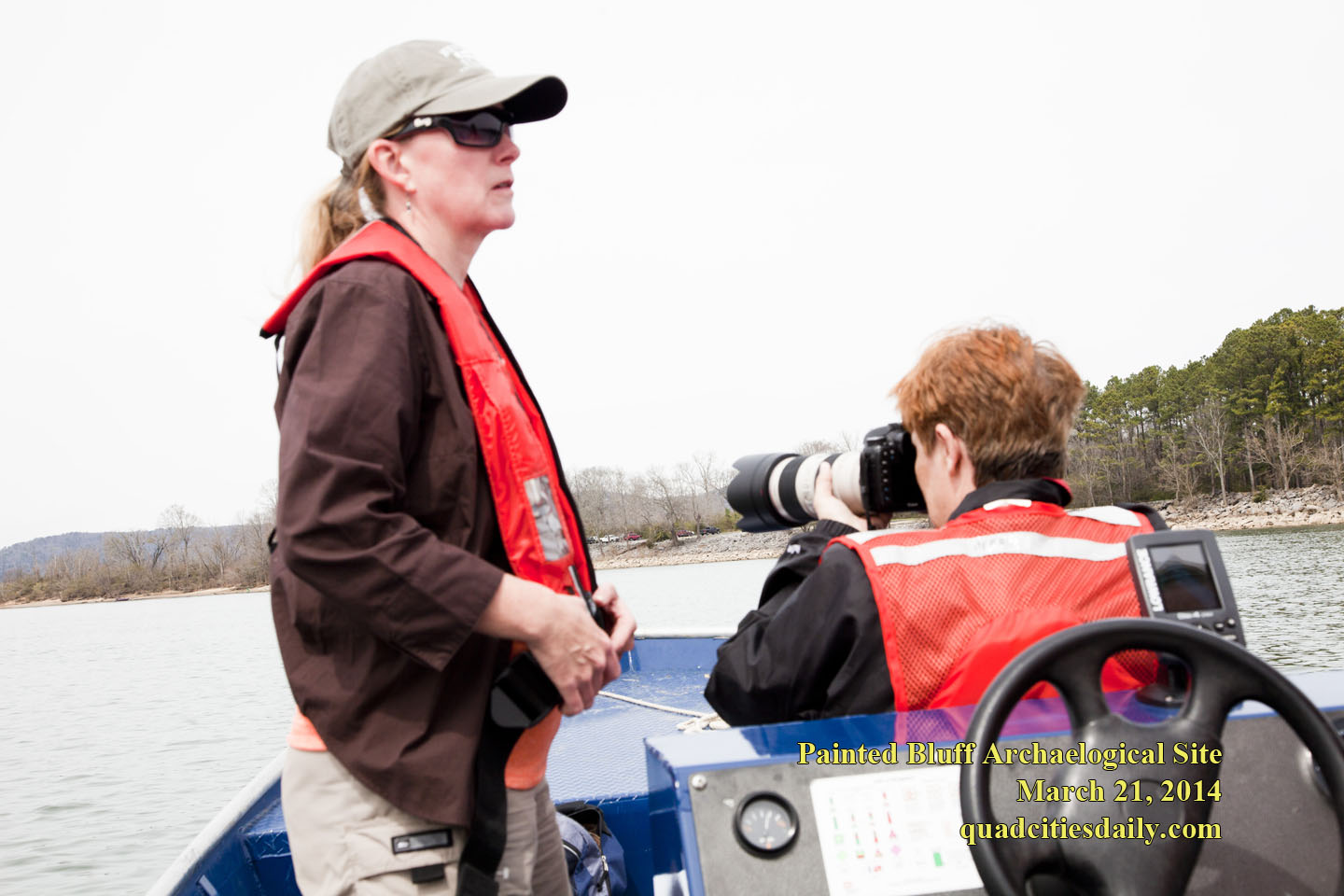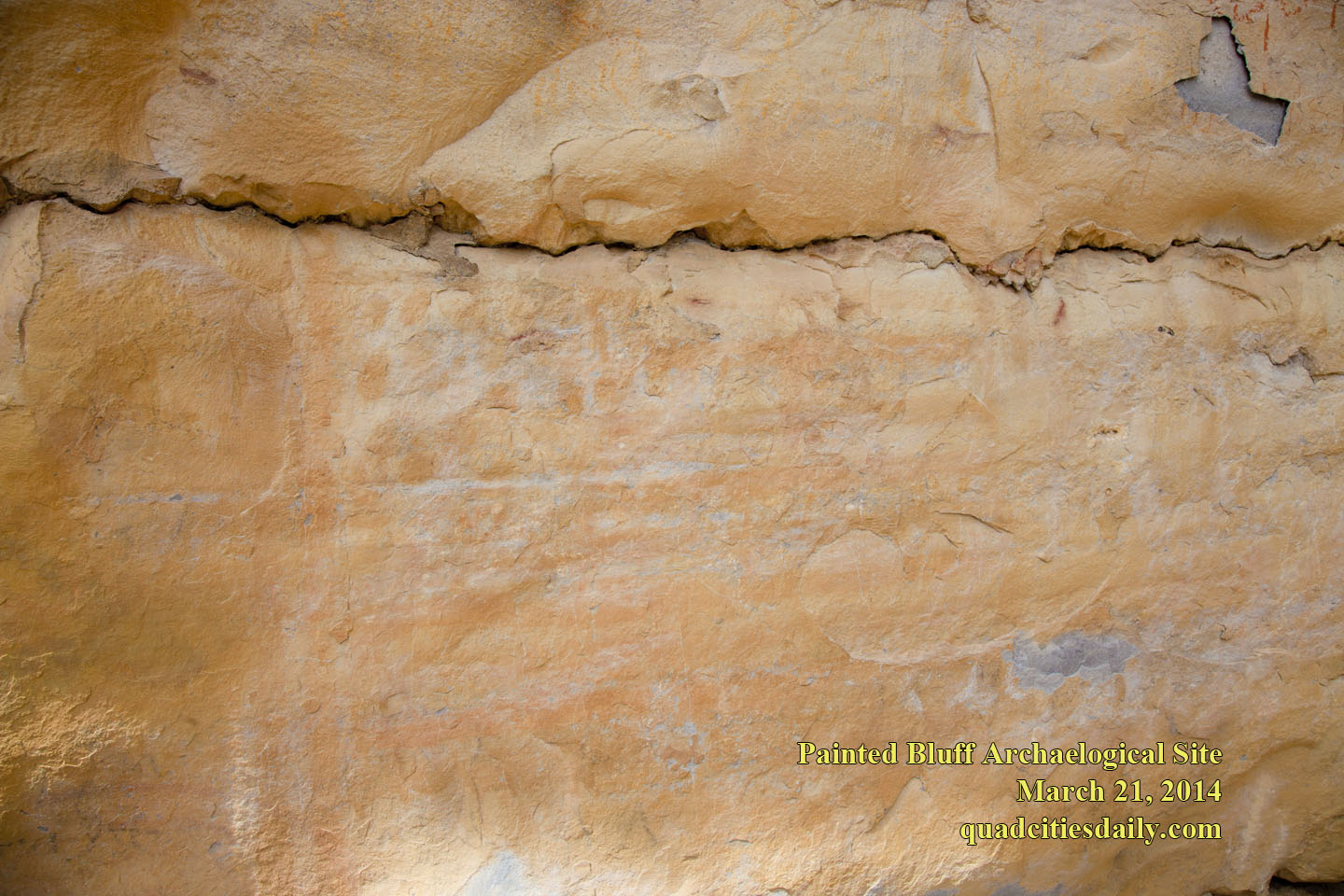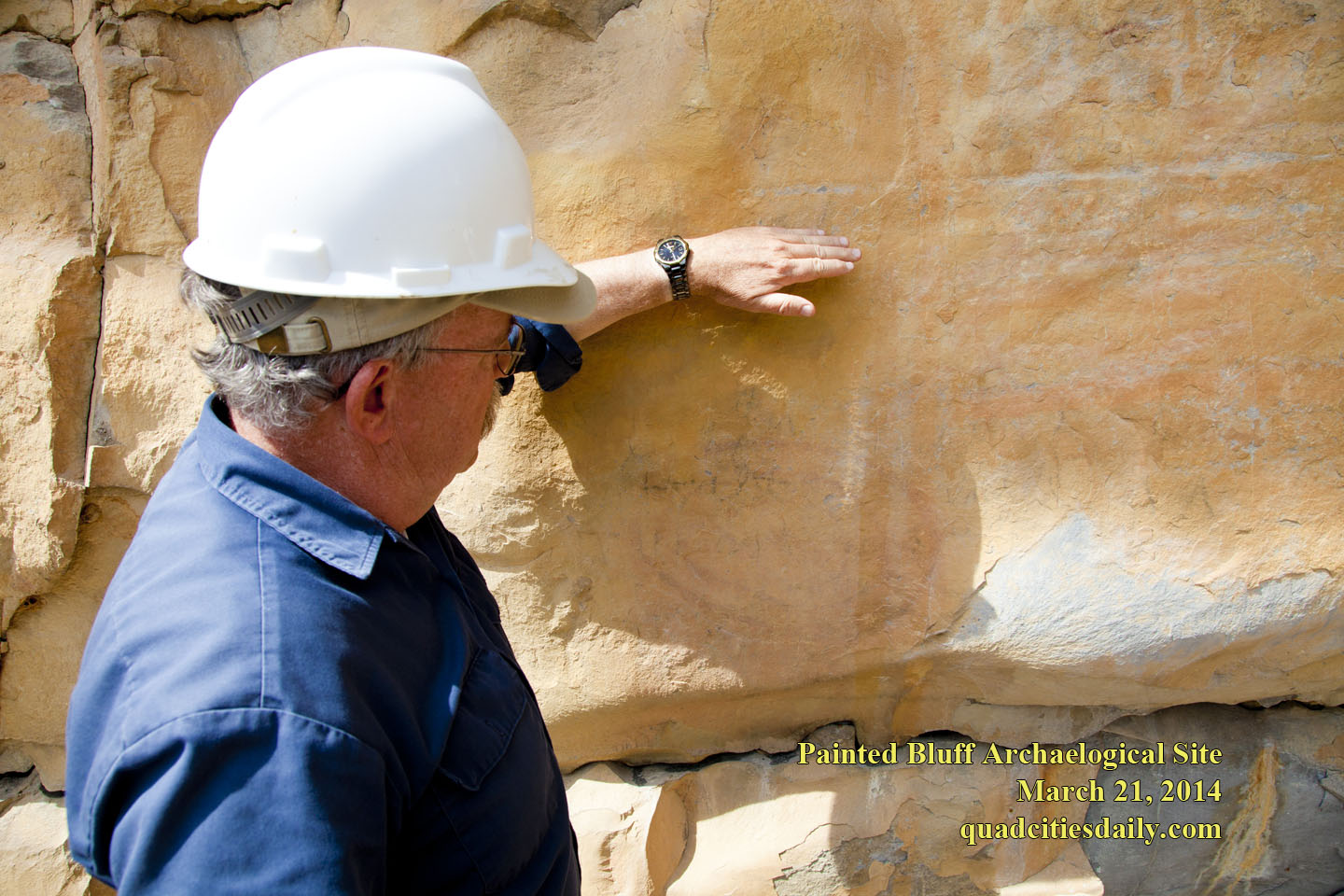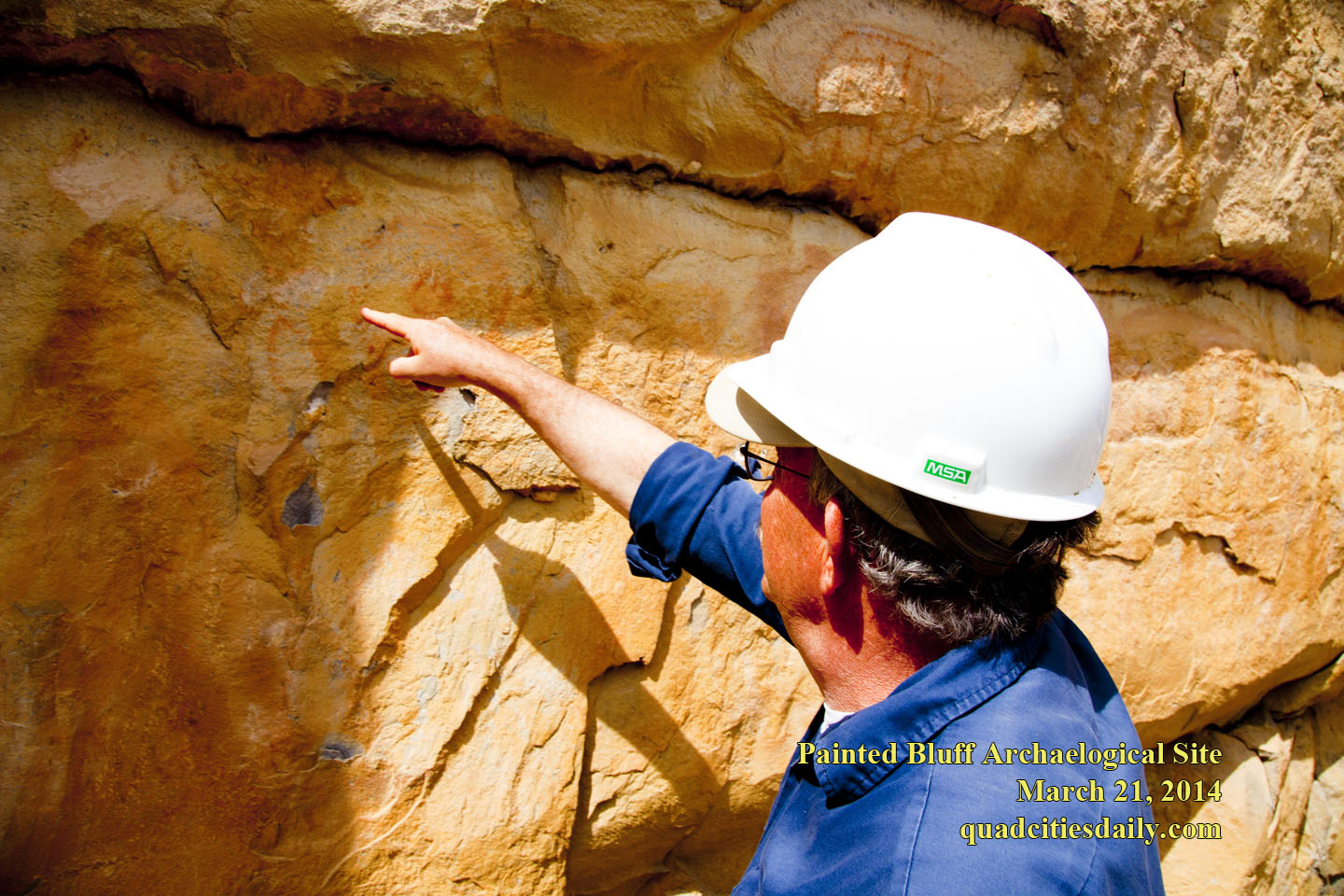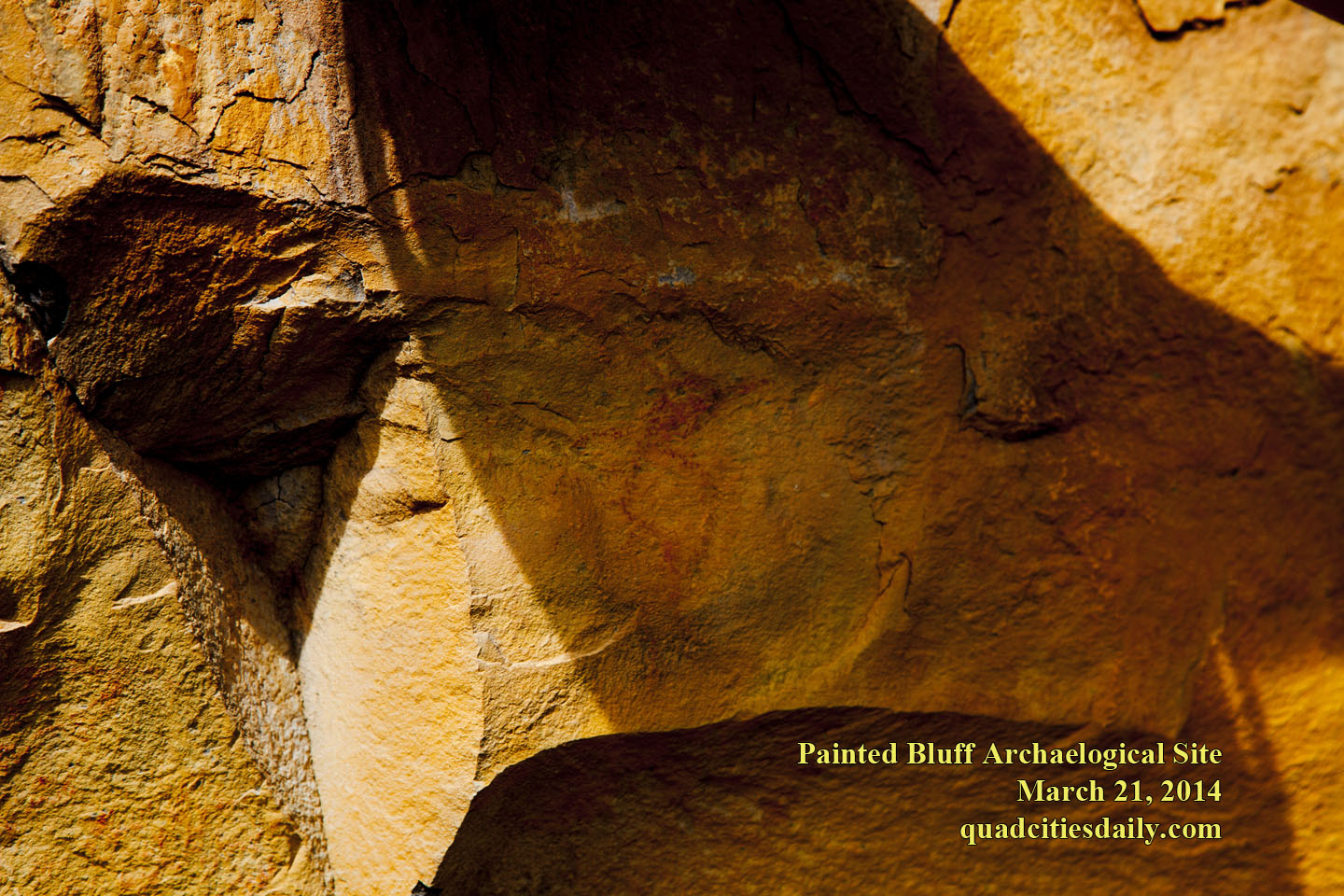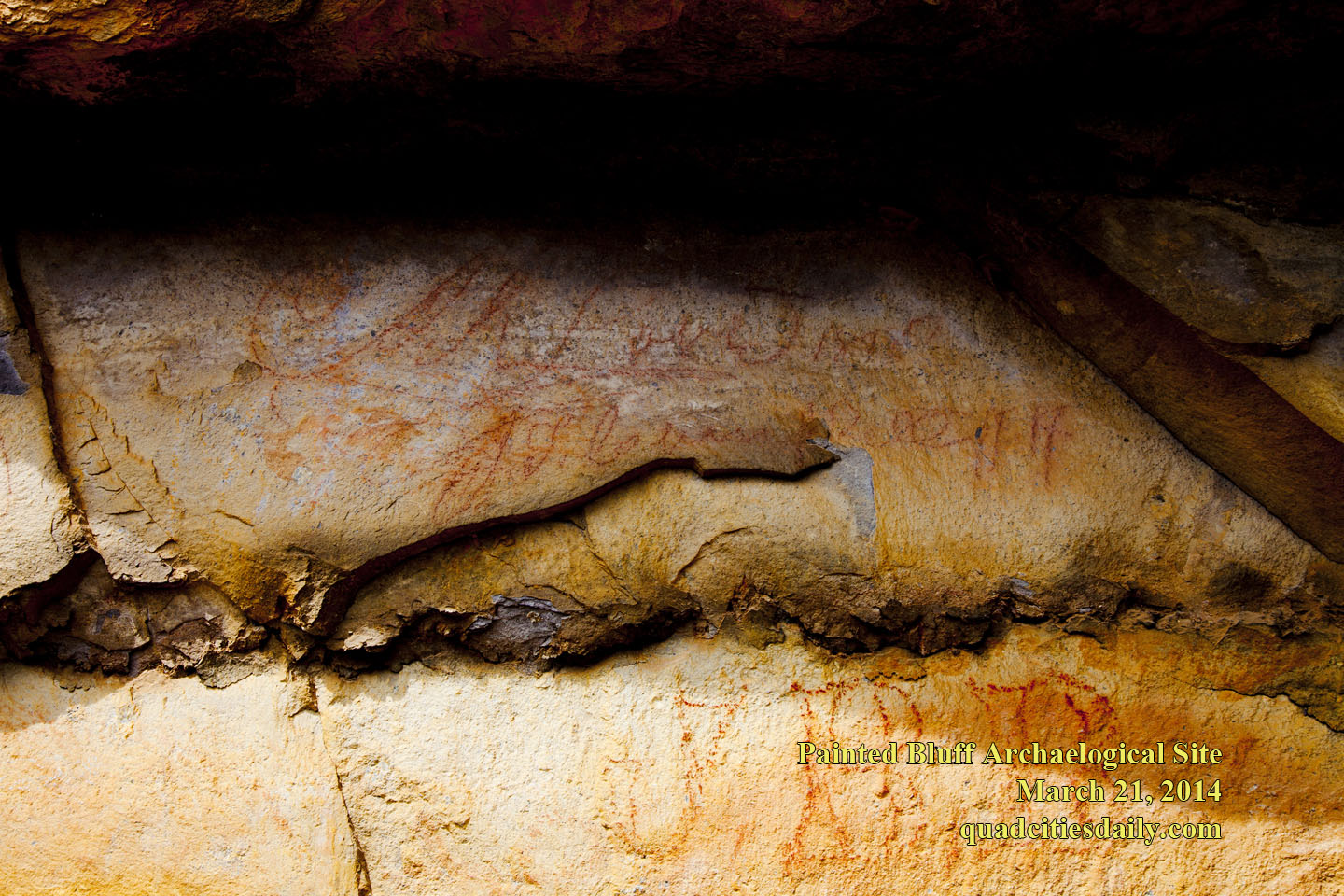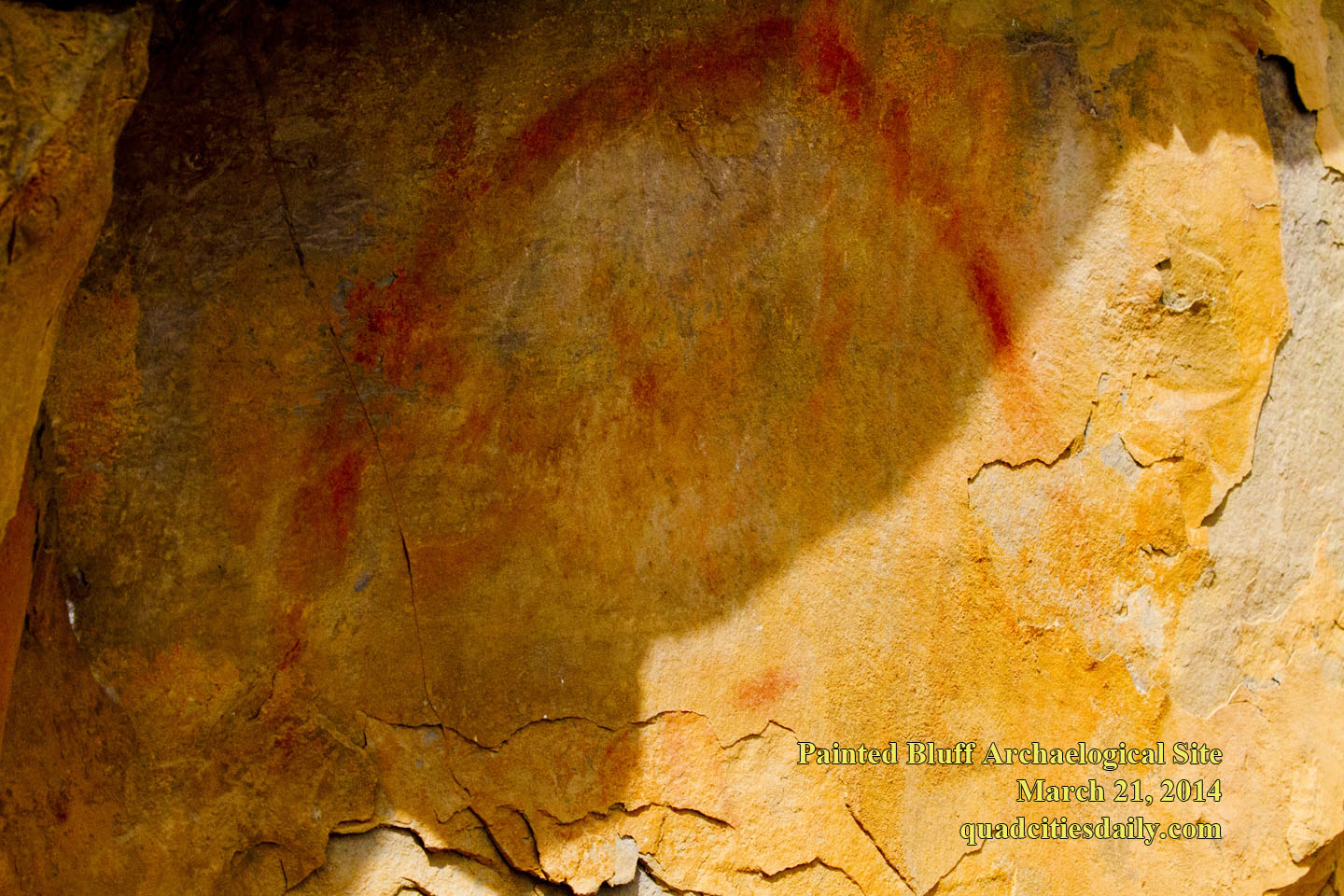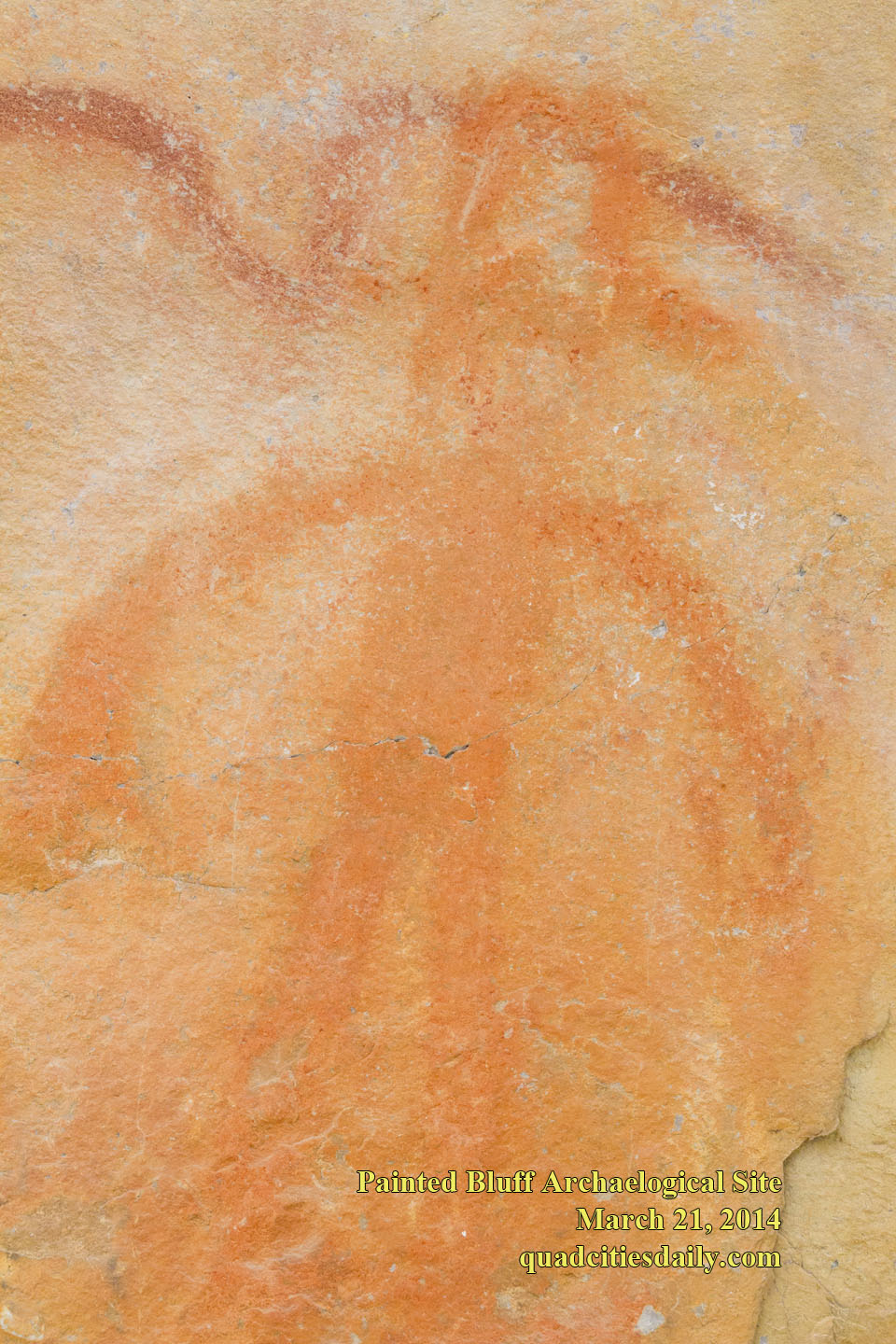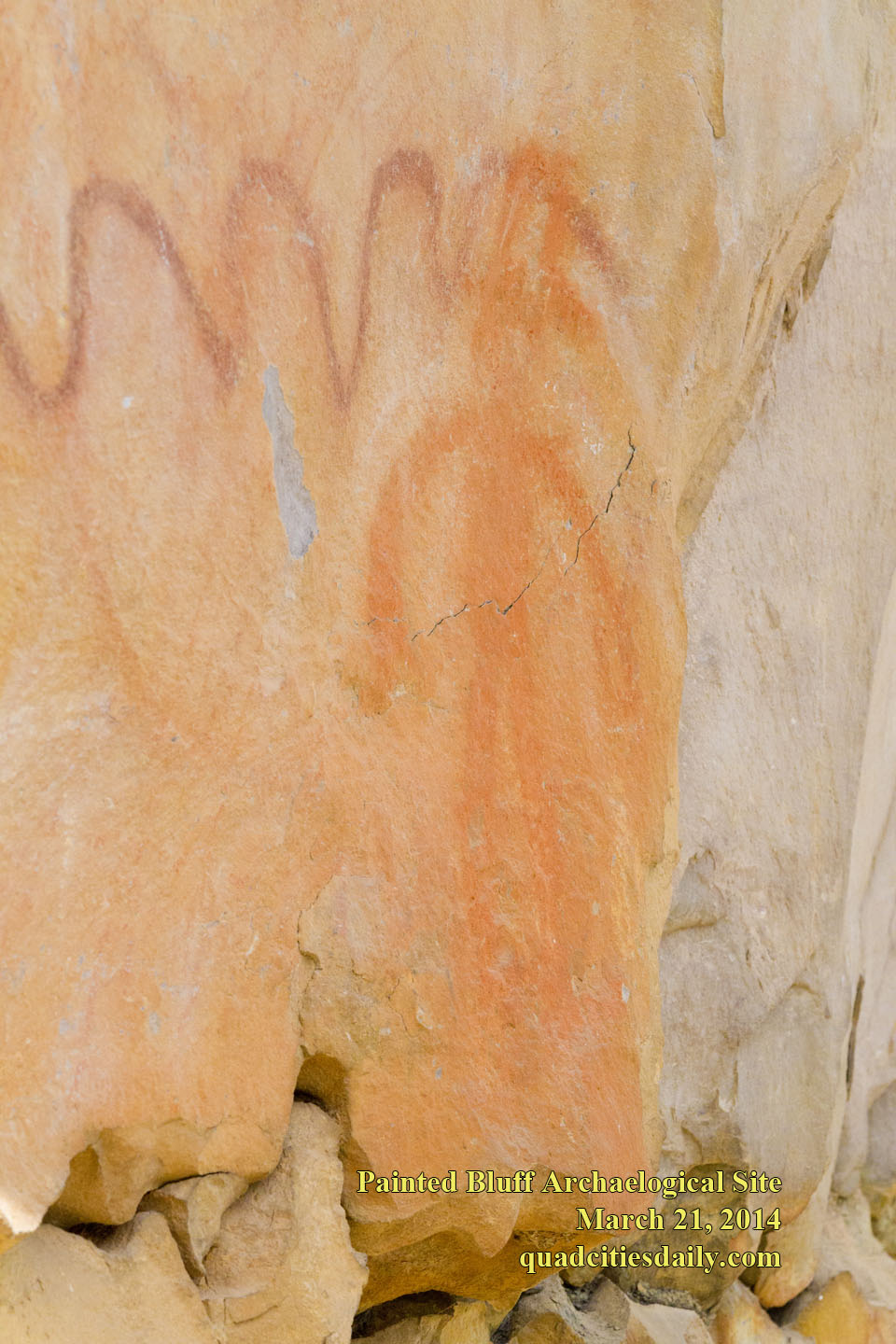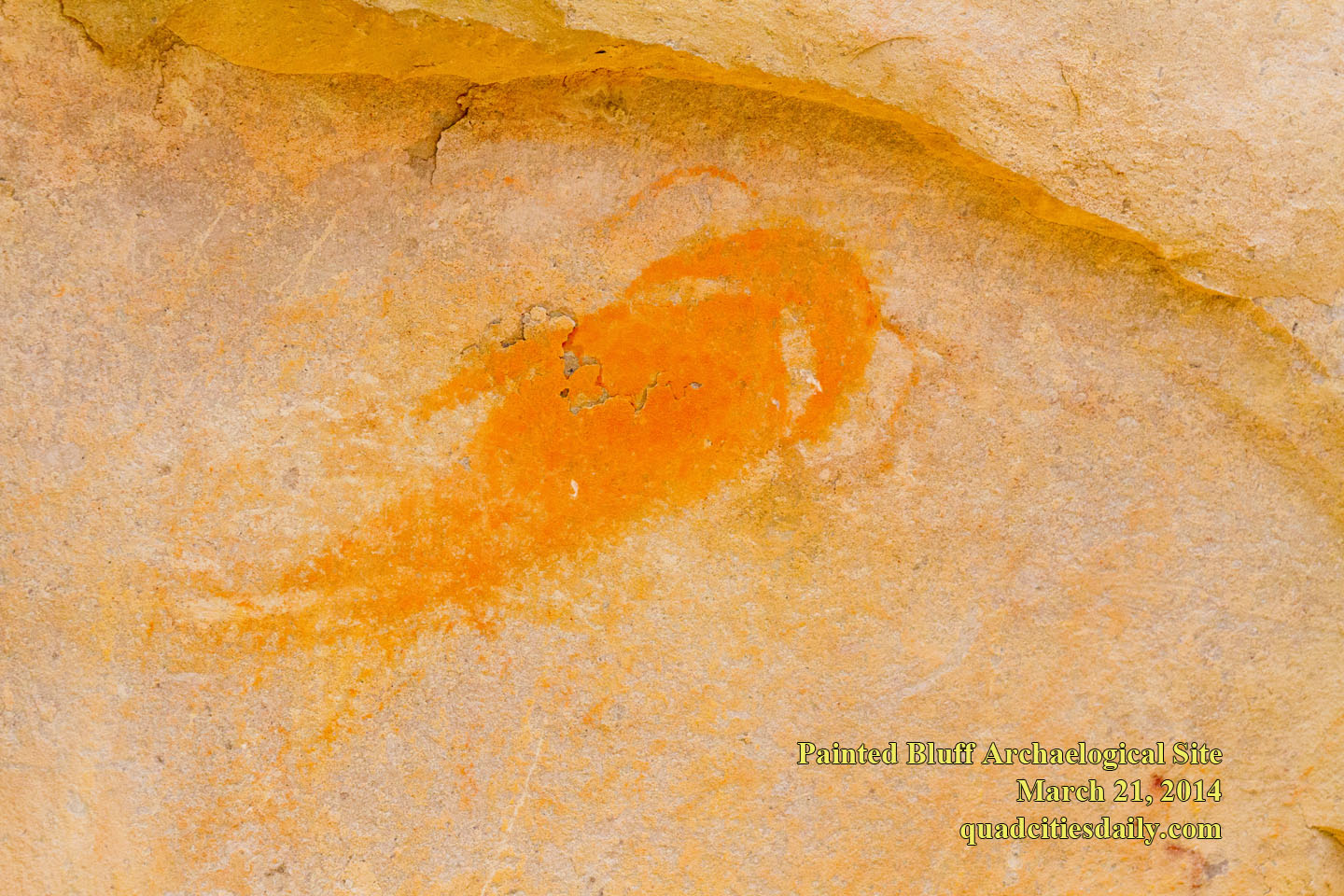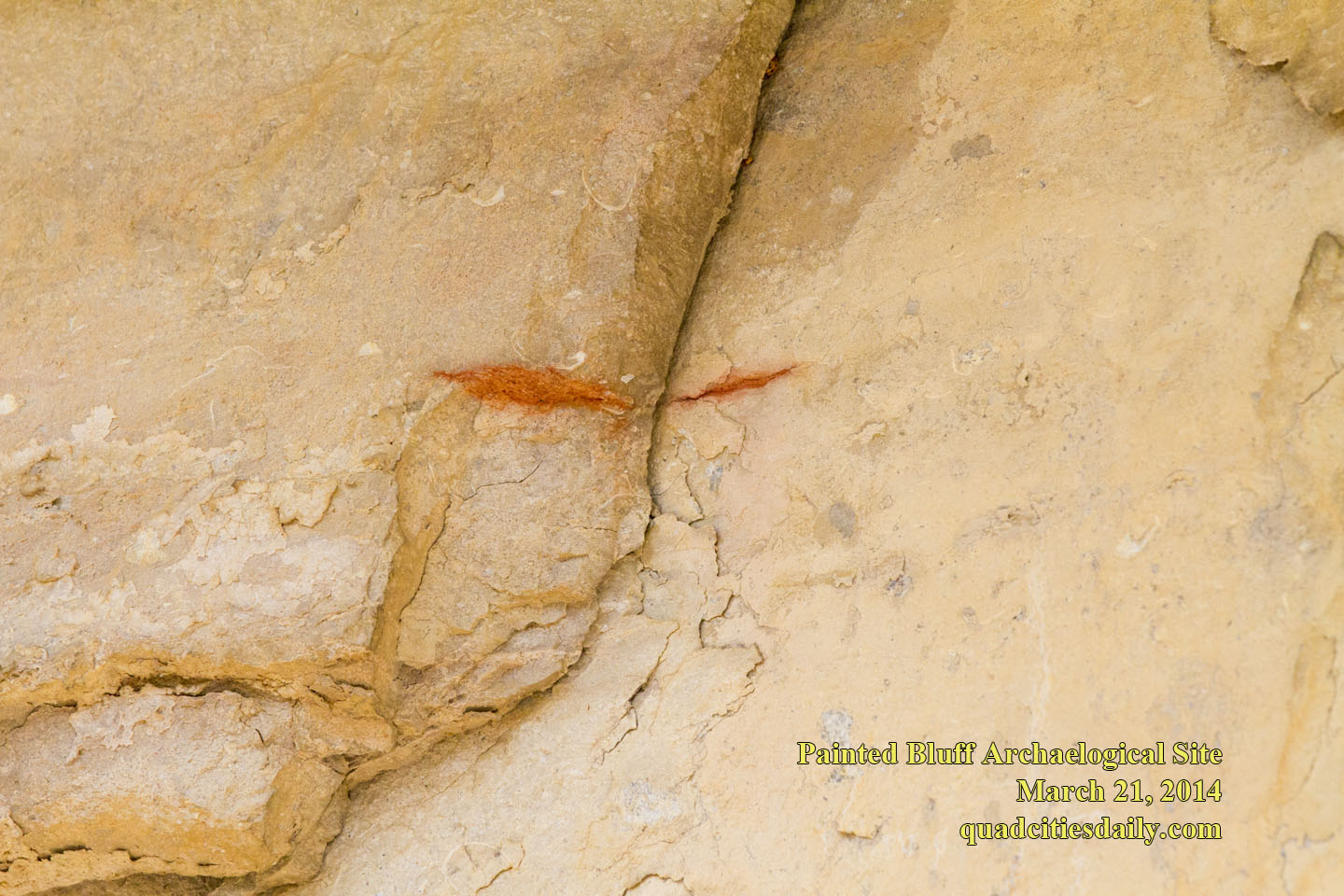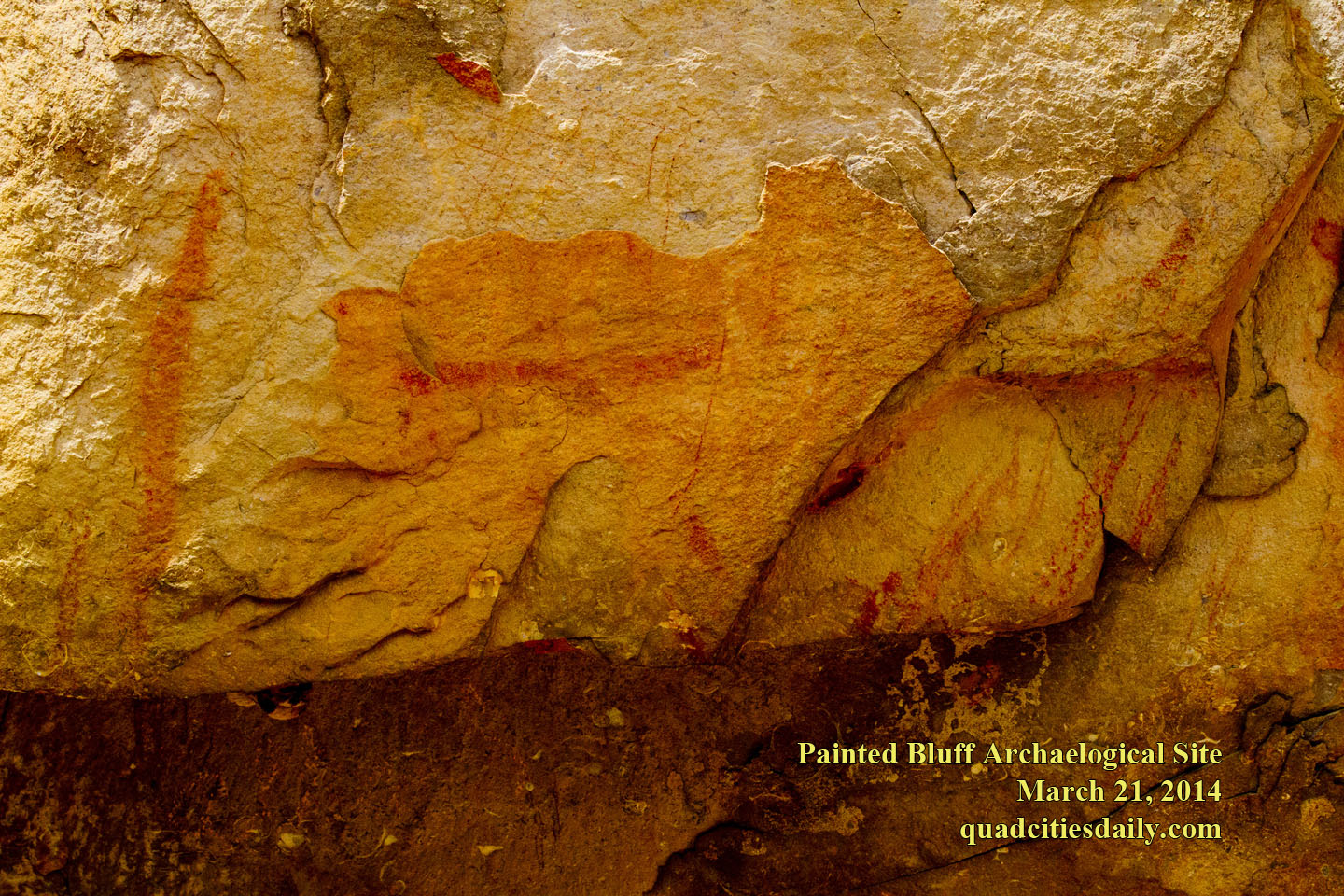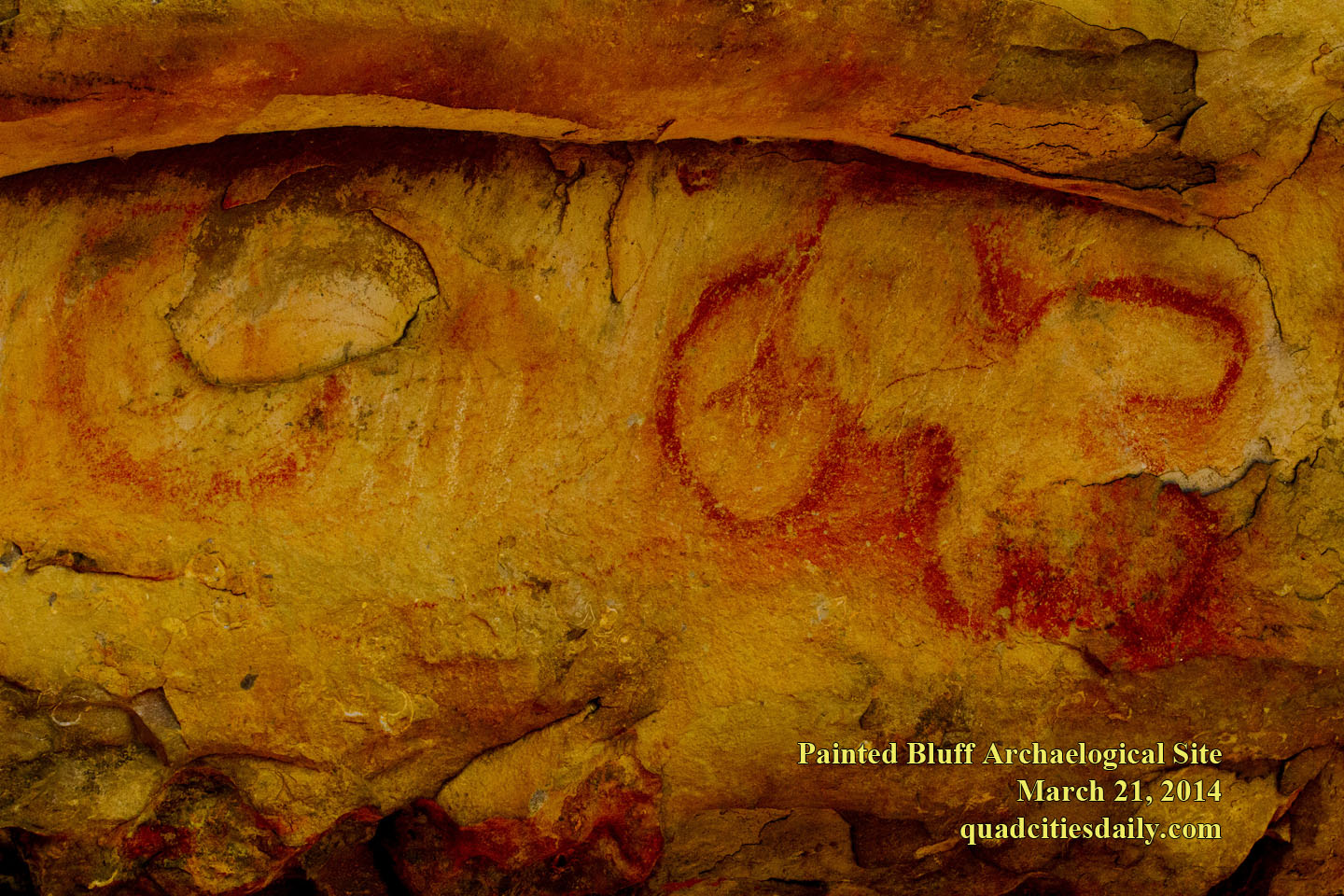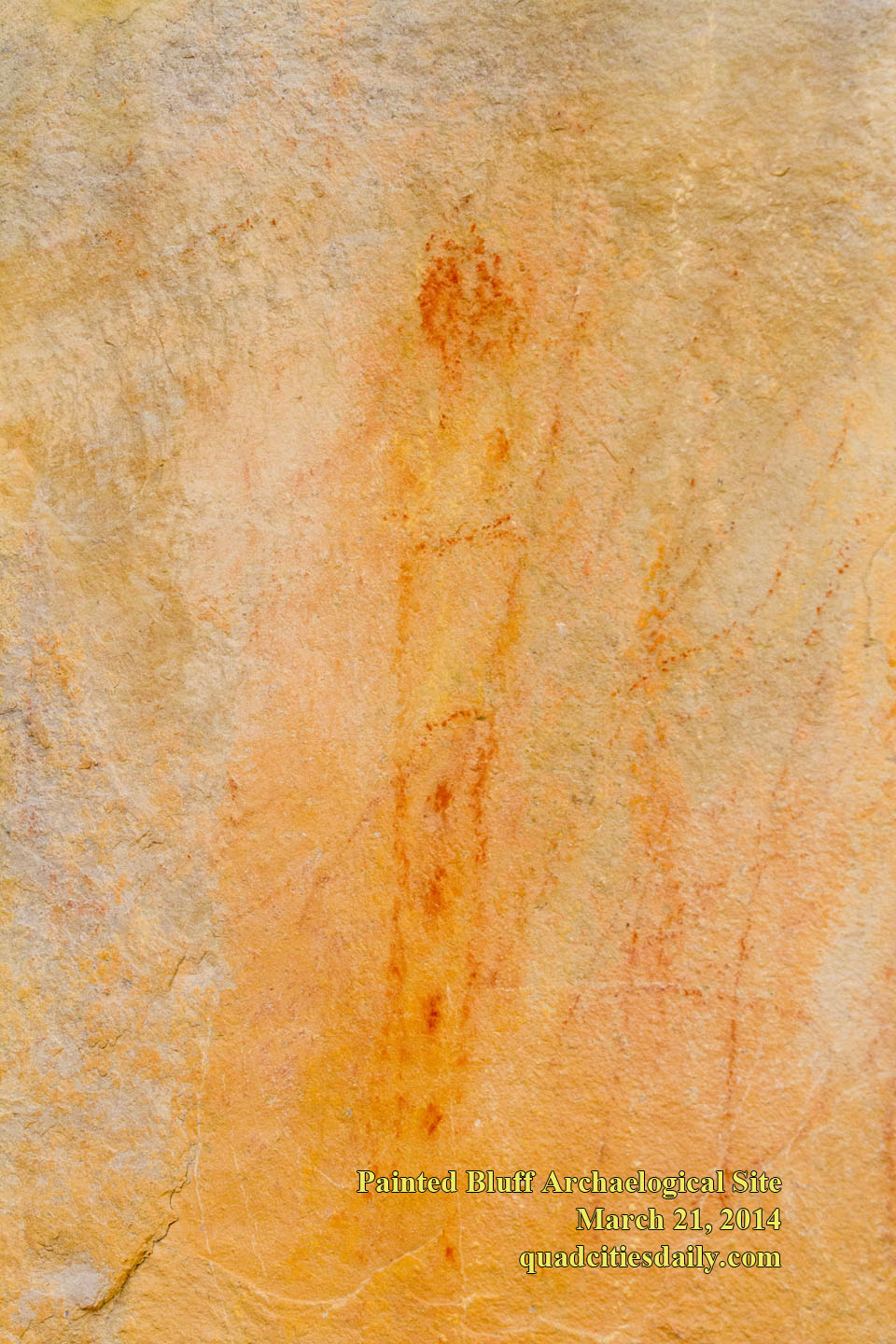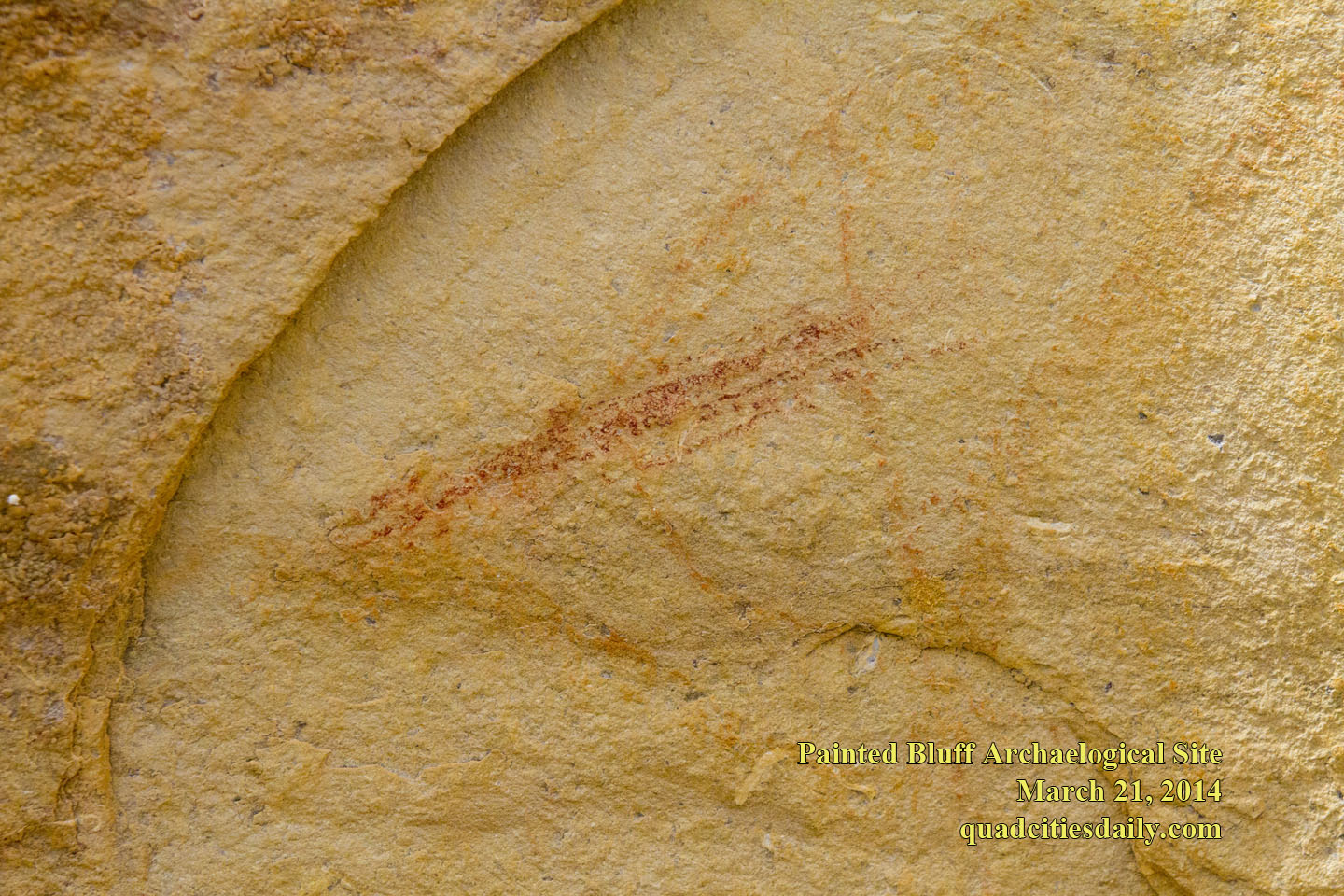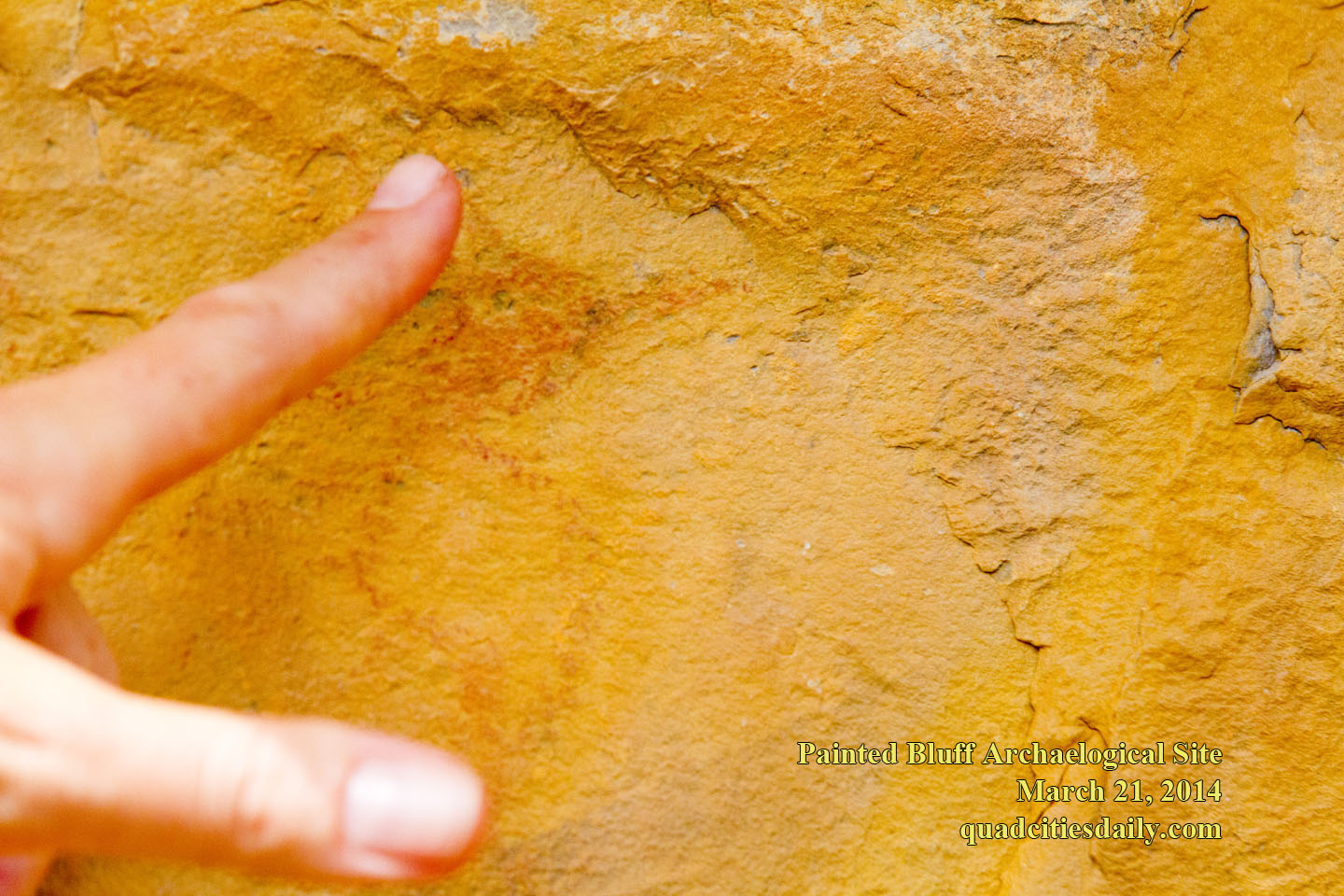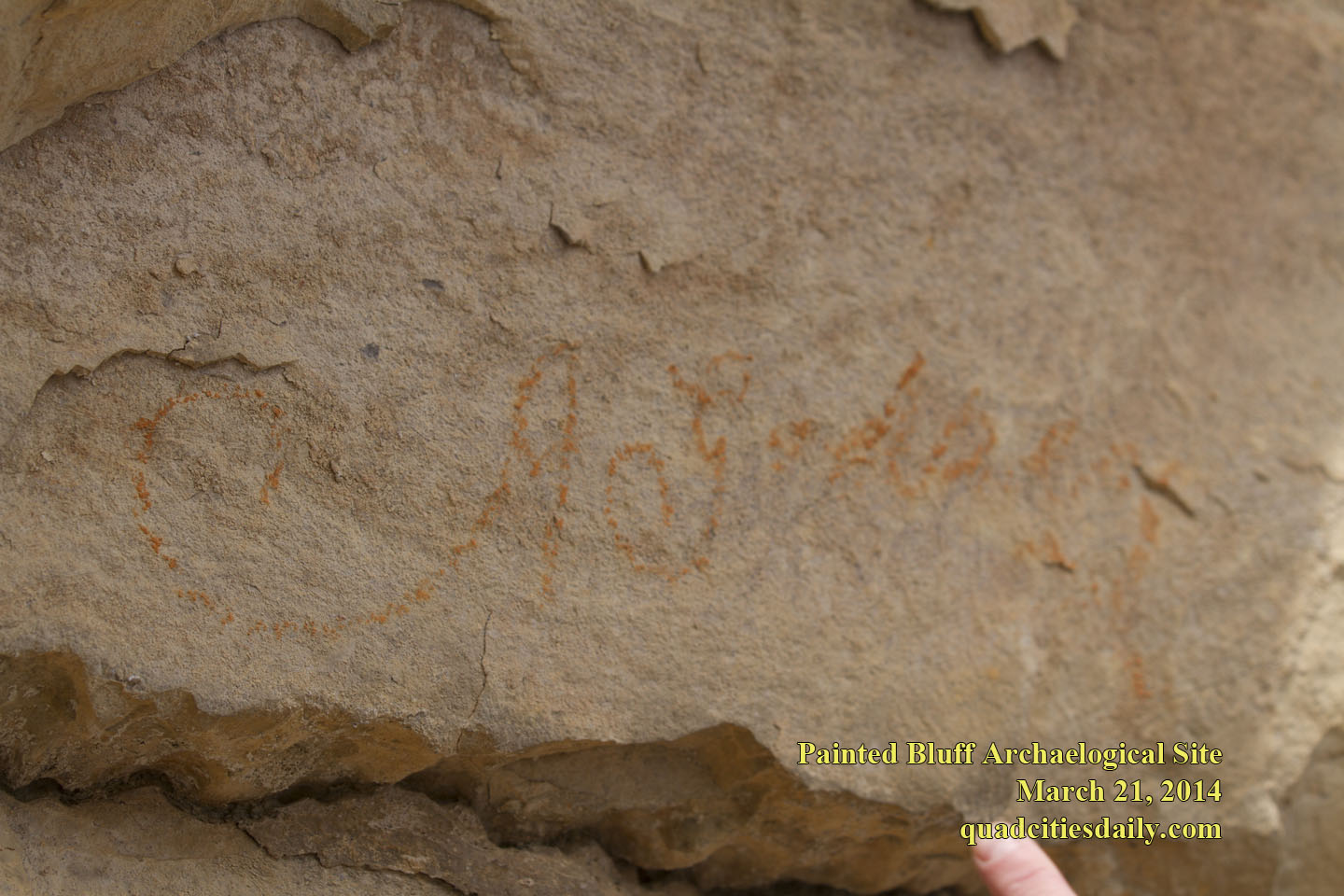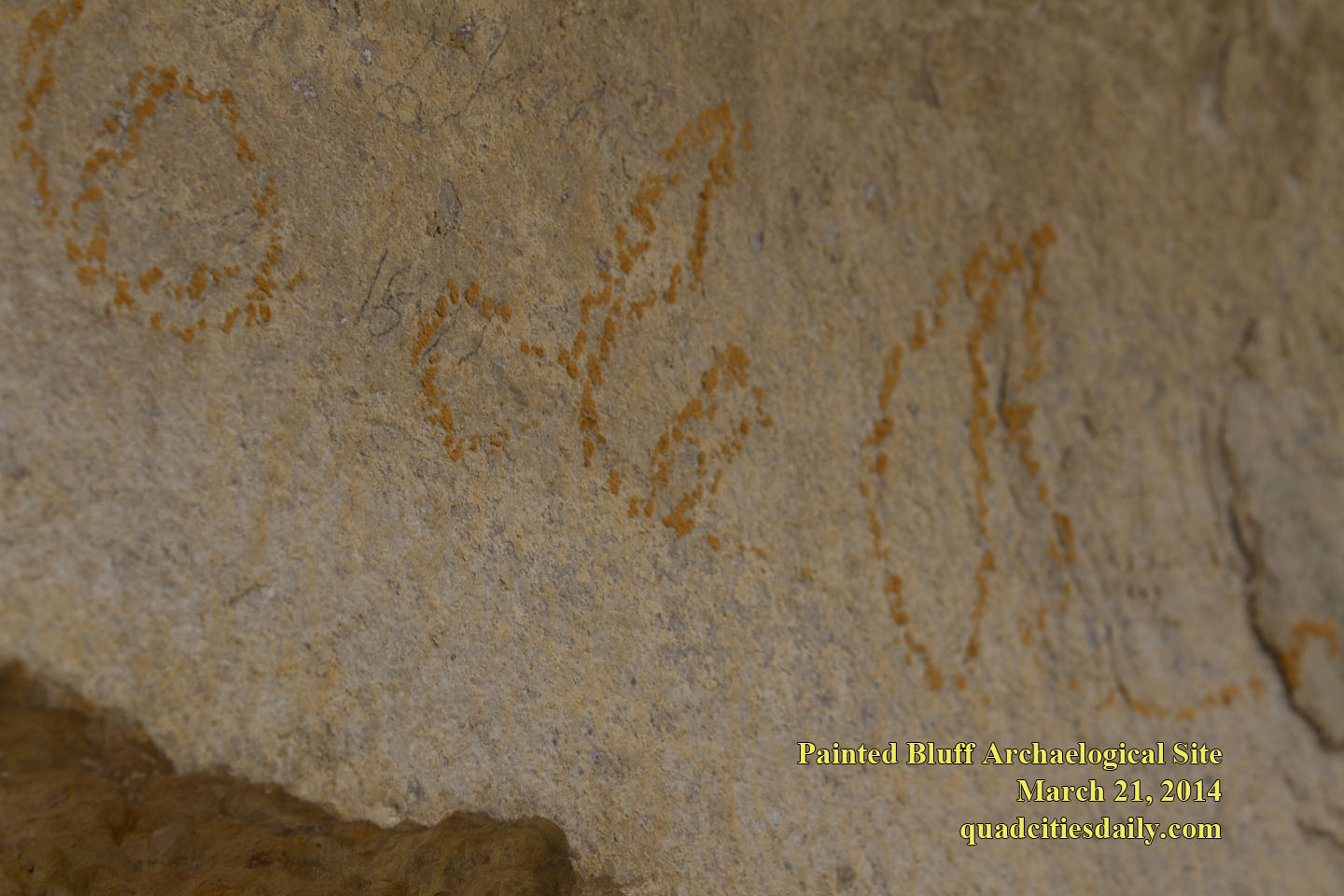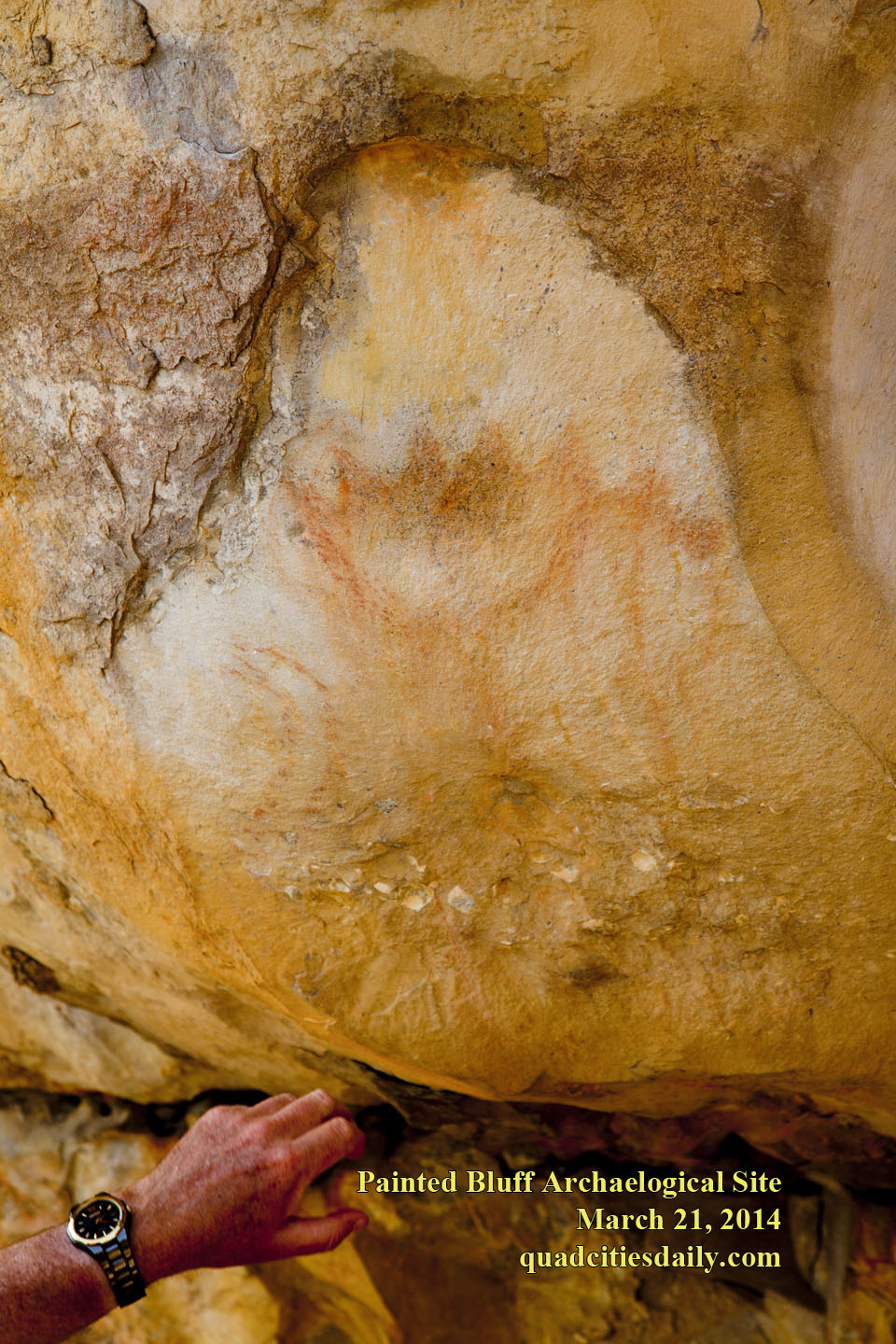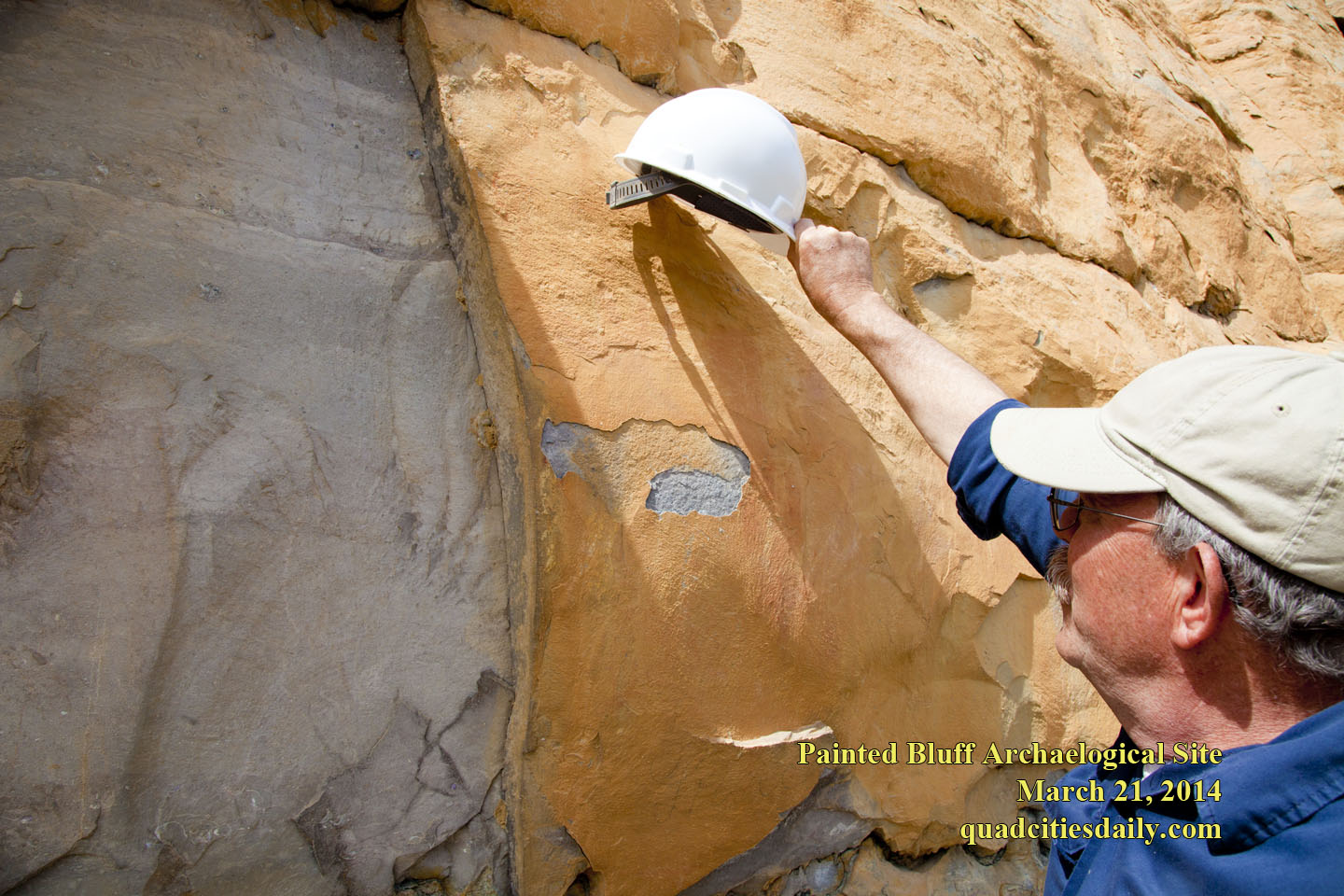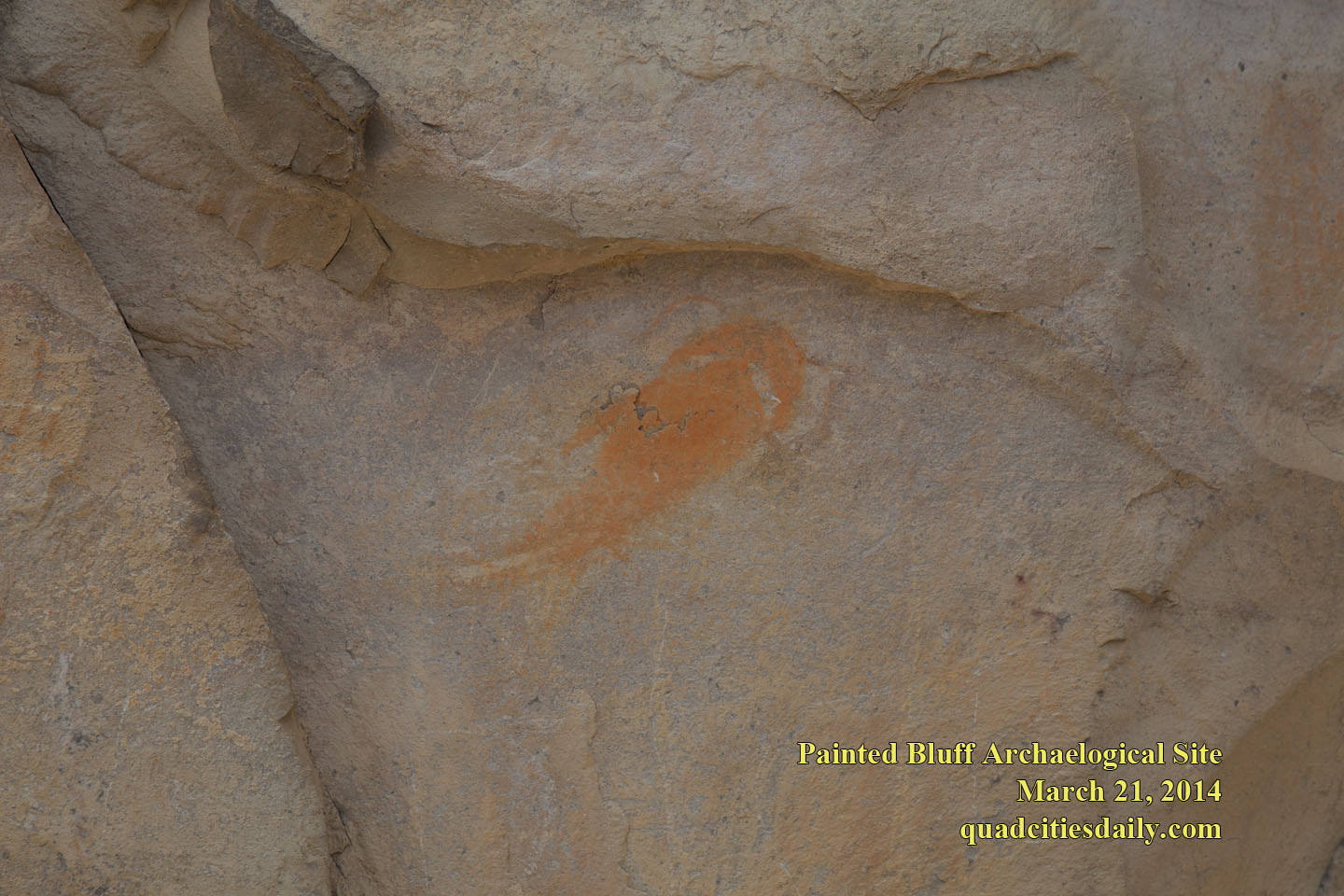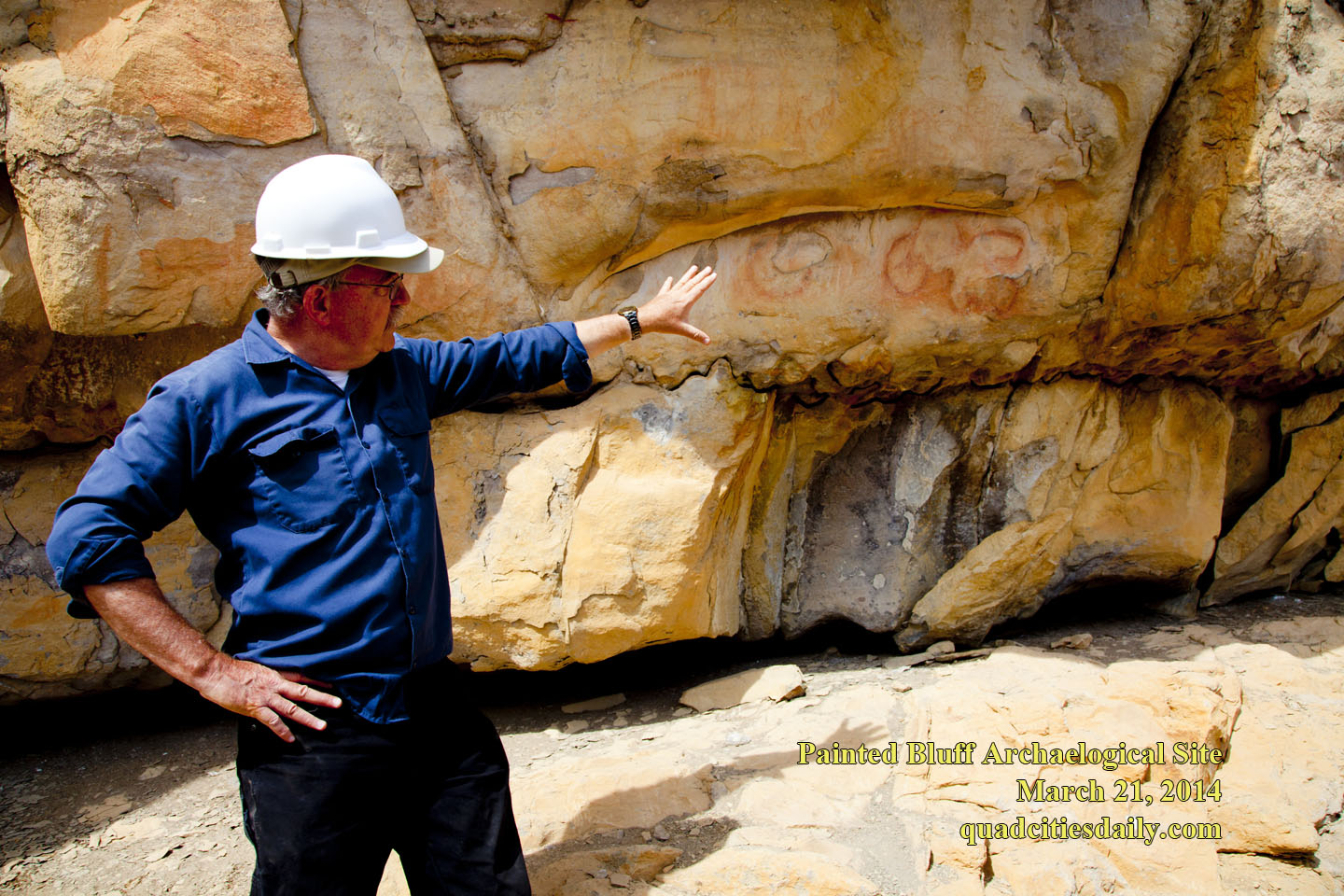 THE TENNESSEE RIVER – It’s right there. You’ll scoot by it in your runabout and not even notice the artwork on the cliff above you. The open-air paint and etchings date back to the time before the New World. Certainly as far back as 1400 A.D. These works include geometric shapes, human and animal figures, and other unique designs painted and etched into the rock across the bluff.
THE TENNESSEE RIVER – It’s right there. You’ll scoot by it in your runabout and not even notice the artwork on the cliff above you. The open-air paint and etchings date back to the time before the New World. Certainly as far back as 1400 A.D. These works include geometric shapes, human and animal figures, and other unique designs painted and etched into the rock across the bluff.
The site is very significant to the Native American tribes who once lived in this area and is protected by the Archaeological Resource Protection Act, which makes it illegal to vandalize or damage archaeological resources on federal land. Unfortunately, neither common sense nor law has stopped hundreds of years of desecration and abuse by people who care little for history. Ancient rock art is fairly common in the Western United States. The dry climate out there is more forgiving to the fragile natural pigments that were employed. Here in the more humid Eastern States, the climate has destroyed most of the rock art. That makes the preservation of Painted Bluff all the more important.
And so, TVA and the University of Tennessee decided to remediate the damage. Dr. Johannes (Jamie) Loubser from Stratum Unlimited in Alpharetta, Georgia, was employed to conduct a conservation project to remove and camouflage graffiti and vandalism at the site to enhance the resource. Loubser is uniquely qualified to tackle the project. He holds a PhD in archaeology from the University of the Witwatersrand, South Africa. In the same year he also received a post-graduate diploma in rock art conservation and management from the University of Canberra, Australia.
TVA had its own experts on the restoration mission; Erin Pritchard, TVA Archeologist is highly qualified in historical site restoration and preservation. Anchoring the TVA cadre was Rebecca Tolene, TVA Vice President of Natural Resources and Real Property Services.
 Here is what TVA told the Quad-Cities Daily about Painted Bluff:
Here is what TVA told the Quad-Cities Daily about Painted Bluff:
- Painted Bluff, in Marshall County, Alabama has been touted as one of “the most significant open-air rock art occurrences in the southeastern United States” (Simek et al. 2009). The site contains over 81 individual recorded prehistoric Native American glyphs that include common southeastern motifs such as human figures, ovals, circles, serpents, animal figures, and birds. The site likely dates to the Mississippian period with an associated radiocarbon date around A.D. 1400. However, multiple layers of overlapping drawings indicate that the site was utilized for many years prehistorically, as well as historically. The site is considered eligible for the National Register of Historic Places because of the information potential associated with the Mississippian period in North Alabama and in the Southeastern United States.
- The prehistoric art includes red, yellow, and orange hematite pictographs and engravings along two separate ledges of bluff along the Tennessee River. Open air rock-art sites of this type are very unique to the southeast and Painted Bluff represents one of the most significant in the region. Today the glyphs located on the upper ledge are only accessible with proper climbing gear not available when the art was produced. Historic art includes signatures and dates going back to the mid-1800s.
- The site was first noted in the 1959 publication by James W. Cambron and Spencer A. Waters who described six large circles on the upper ledge of the bluff. At this time, modern graffiti had already impacted the glyphs and the true extent of art along the bluff is unknown. The site was revisited numerous times during TVA archaeological inventory surveys along the reservoir, but was not intensively documented until 2004, when archaeologists from the University of Tennessee visited the site and attempted to document the extent of images across the entire site. To date over 80 prehistoric images have been recorded. It is anticipated that additional documentation will be needed once graffiti has been removed.
- The site is imminently being threatened by vandalism, graffiti, and the ongoing natural weathering of the rock. Because of its open location, it is exposed to natural elements and the surface around the glyphs has become fragmented and is vulnerable to chipping and flaking. In addition, the resources are inadvertently being impacted by dispersed recreation activity (rock climbing).
After a month-long expedition of restoration and preservation in some really inclement weather conditions, the Painted Bluff site was ready for viewing by the media. TVA invited the Quad-Cities Daily to travel out to the site interview Dr. Loubser, and photograph the fruits of the team’s labor.
[youtube http://youtu.be/LE1aSmT5-cU]
This gallery of photographs shows some of the cliff art:
These photographs are COLOR-ENHANCED. They will make it easier to make out the artwork.
Photos by Sheri Wiggins and Steve Wiggins





